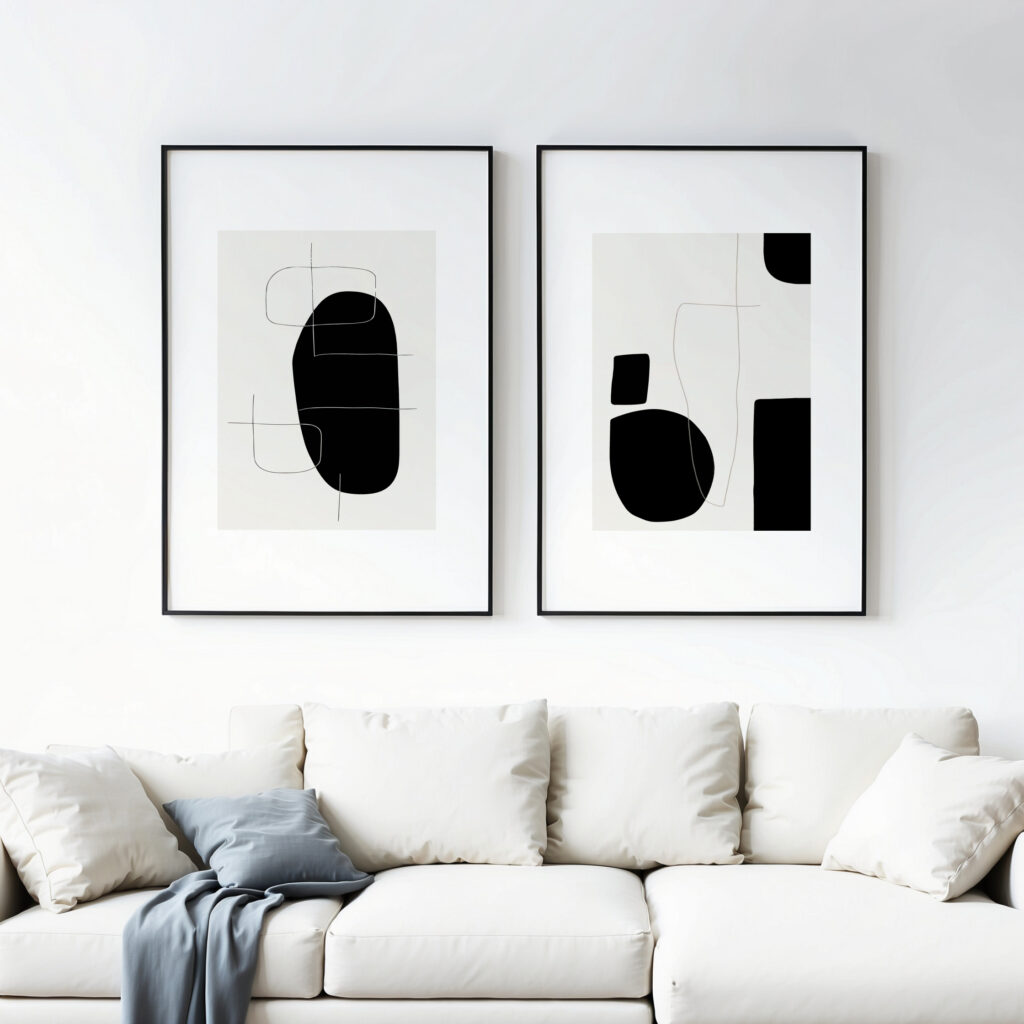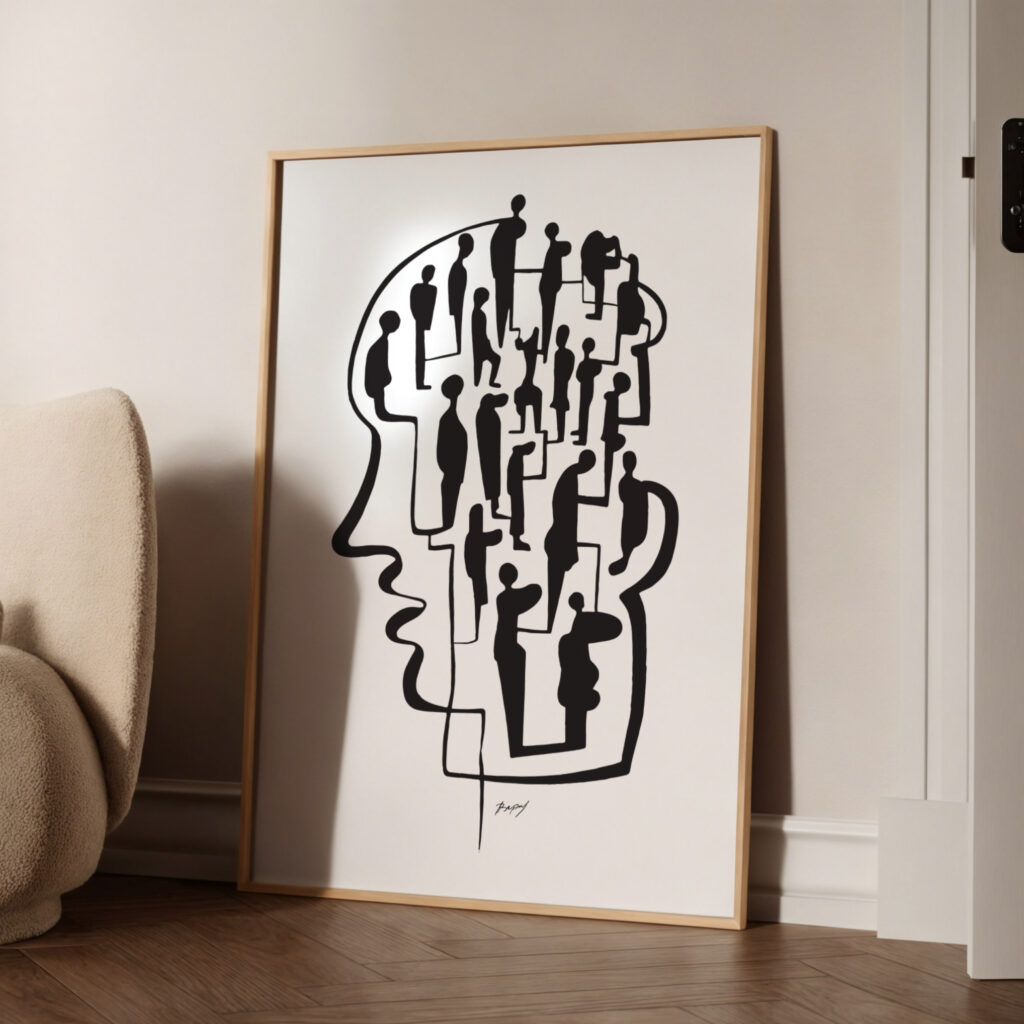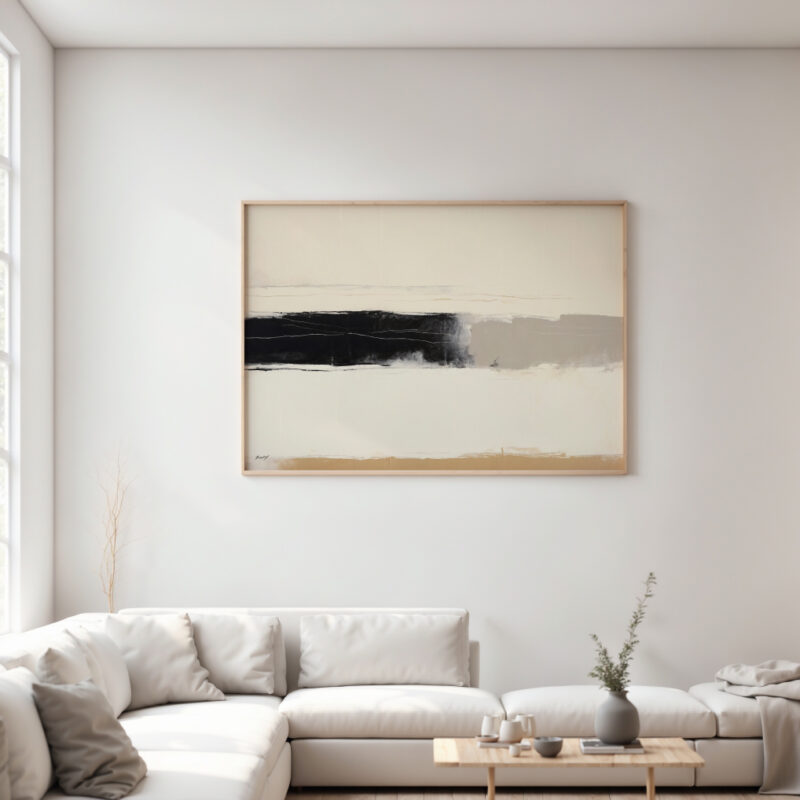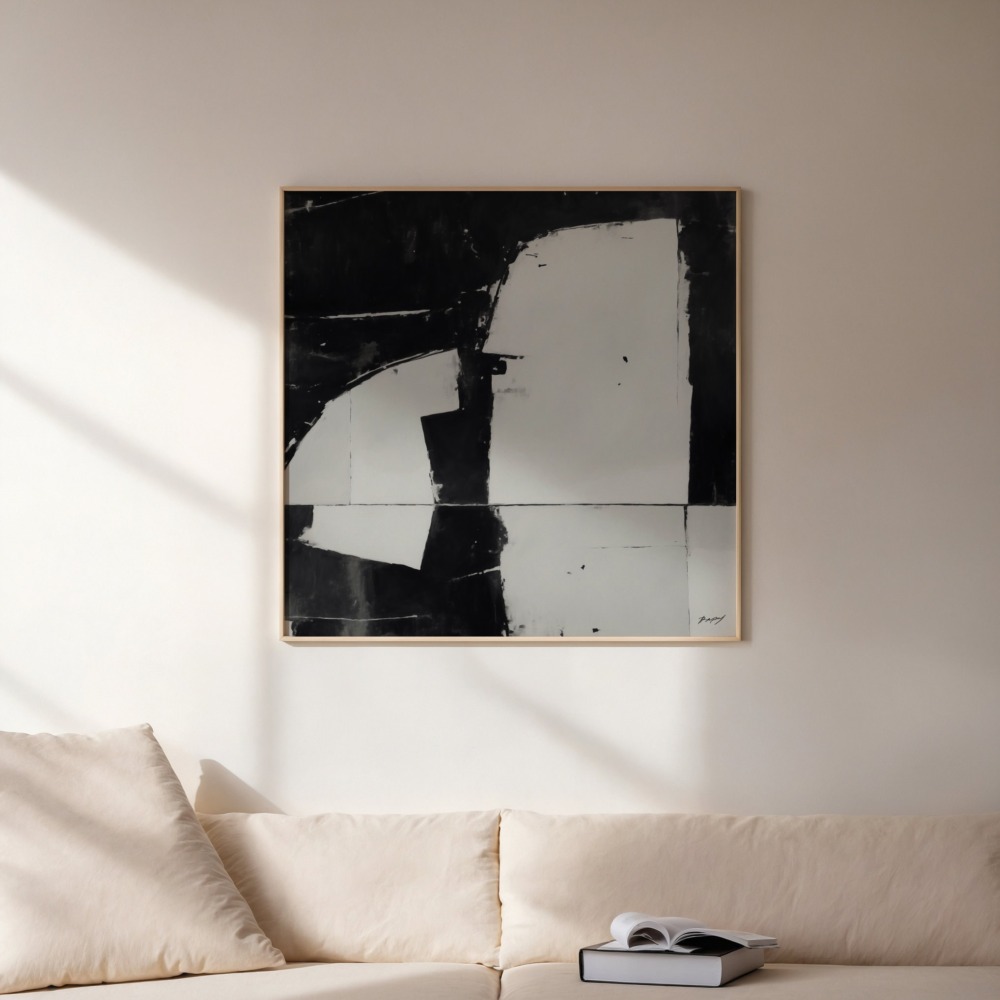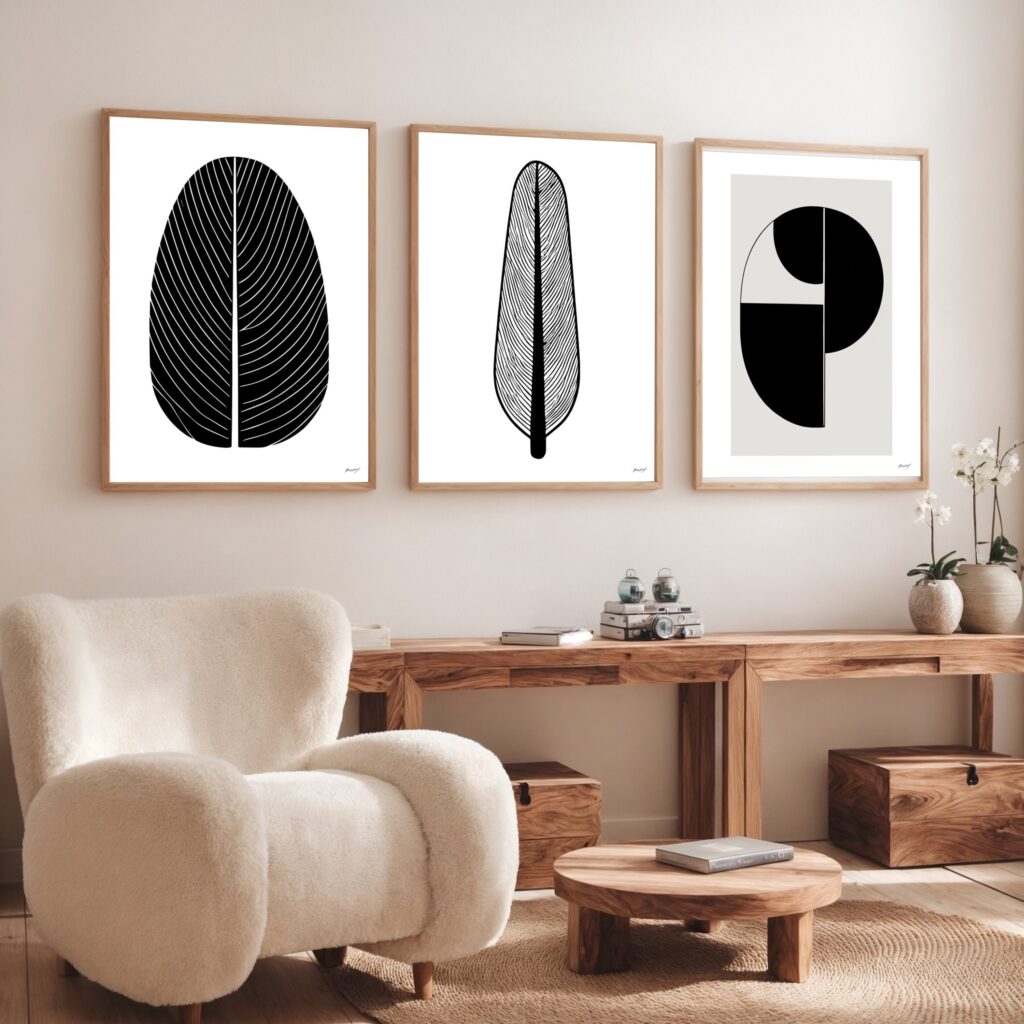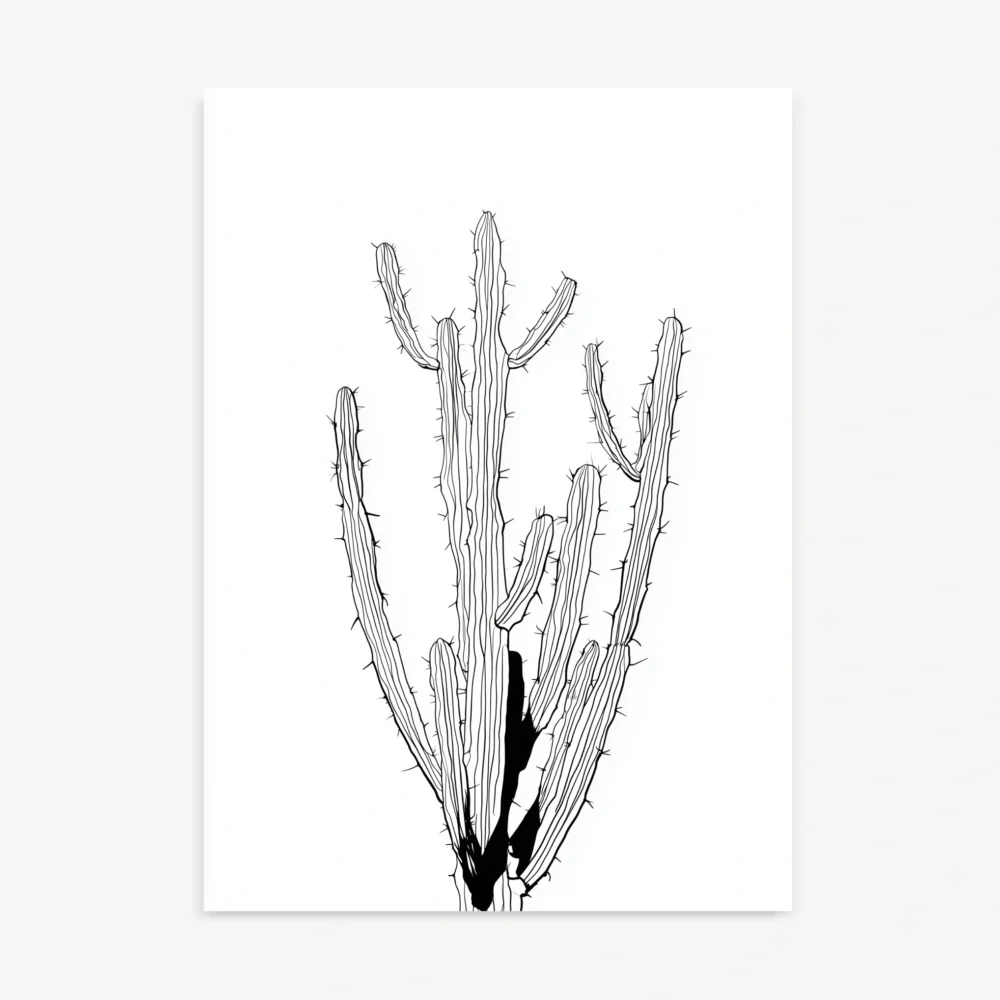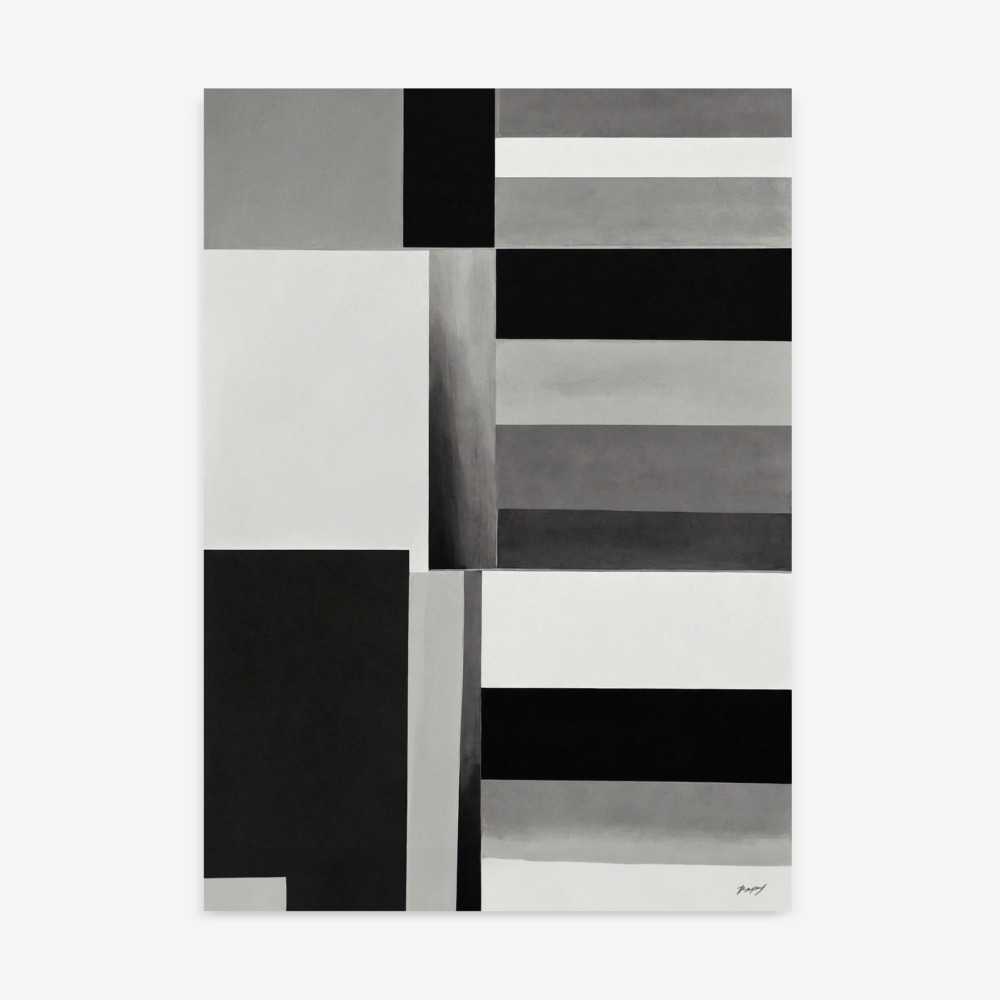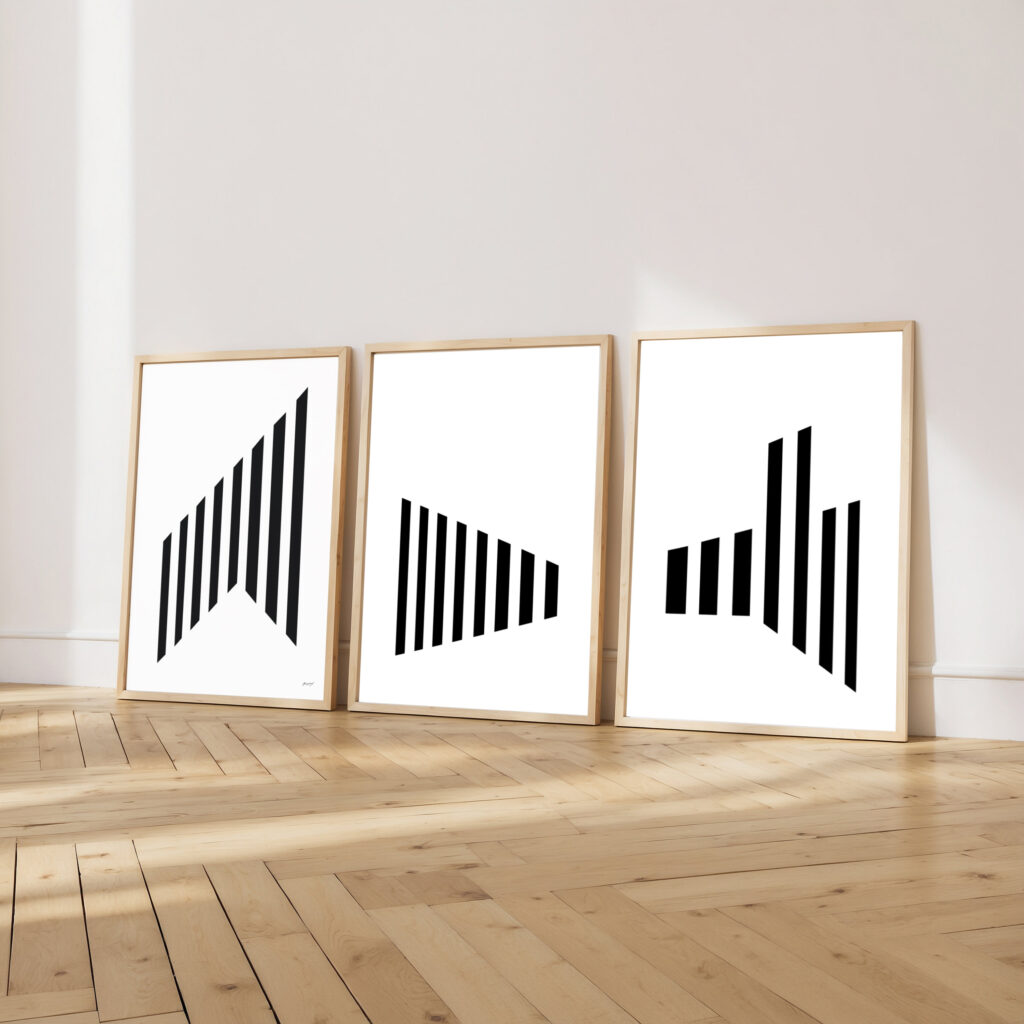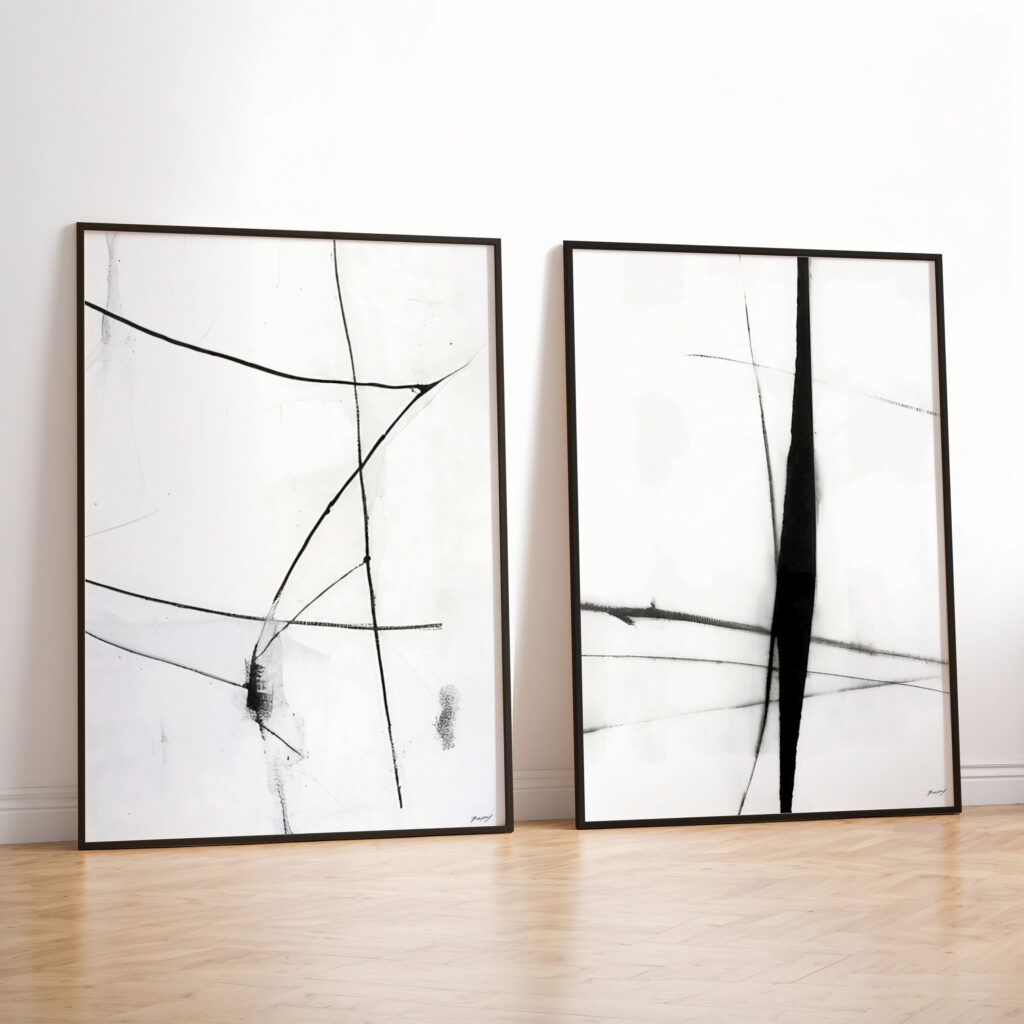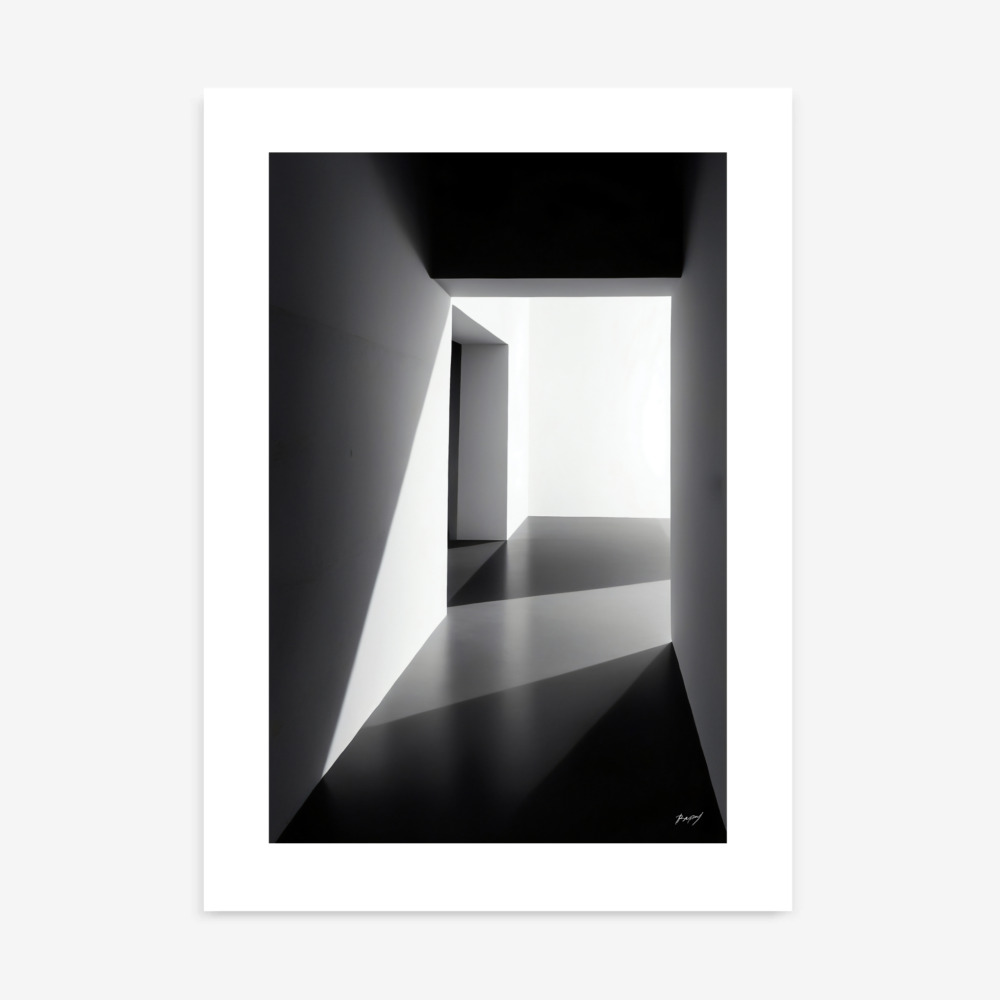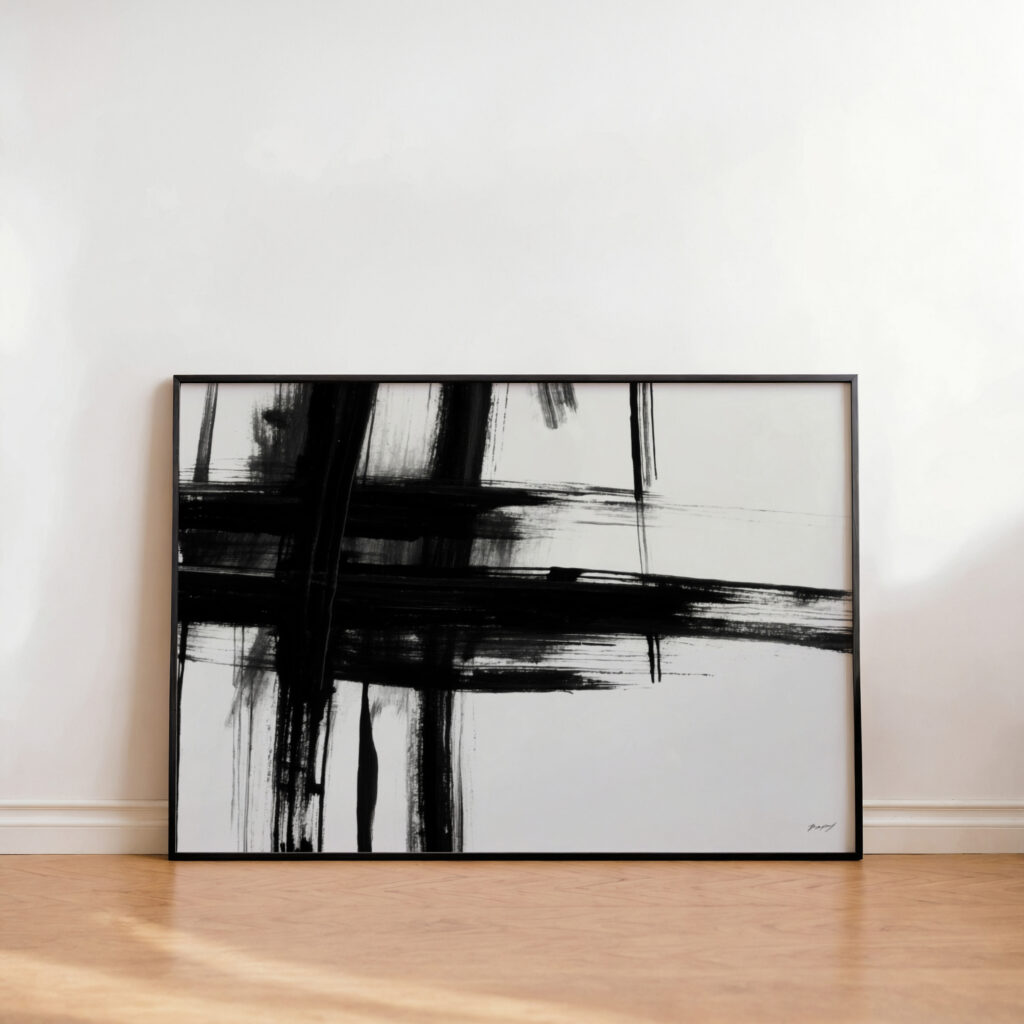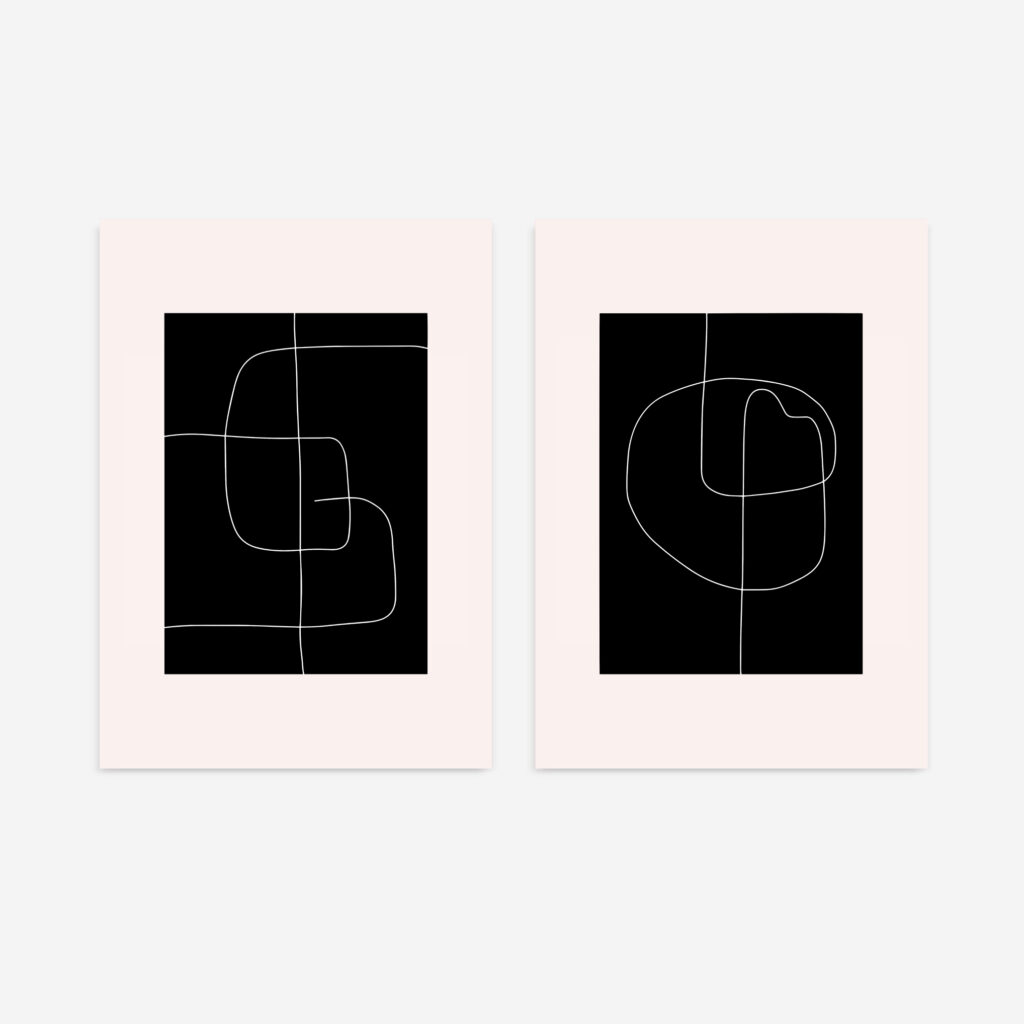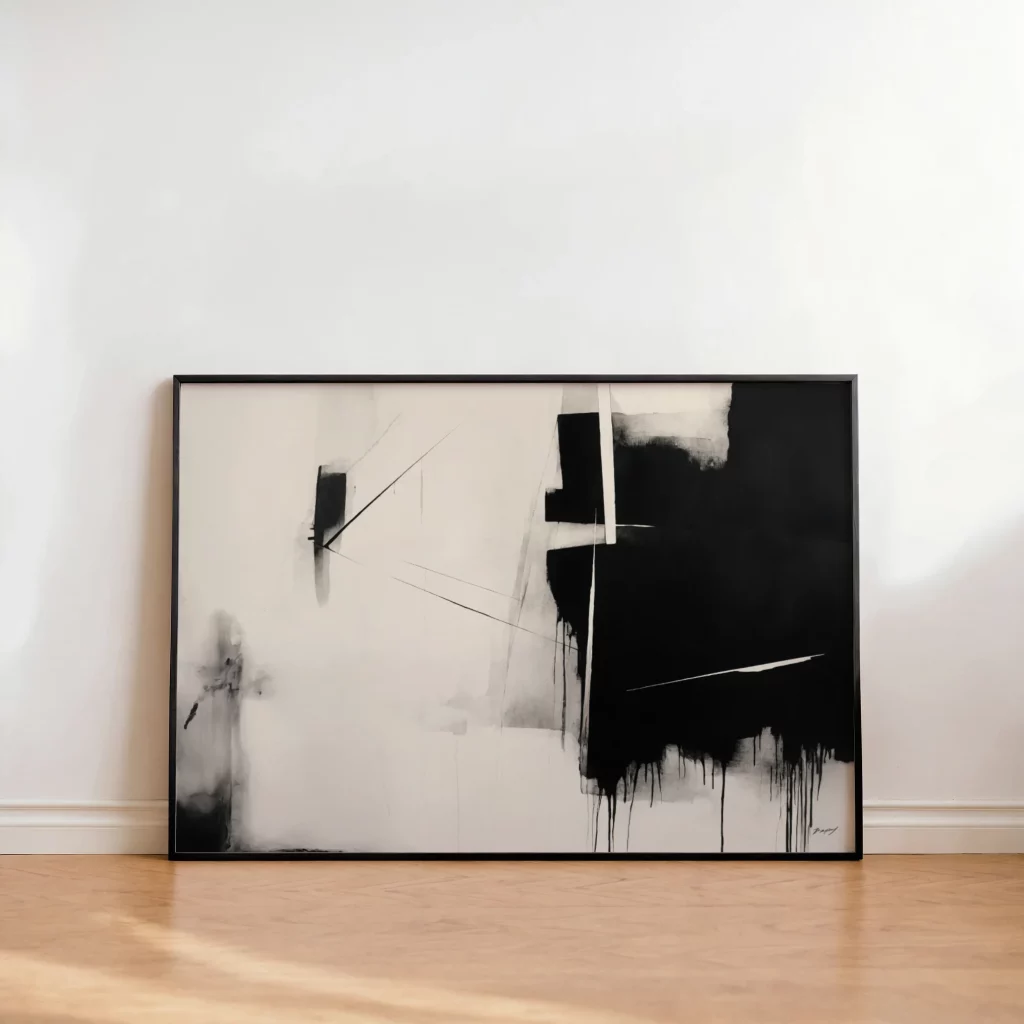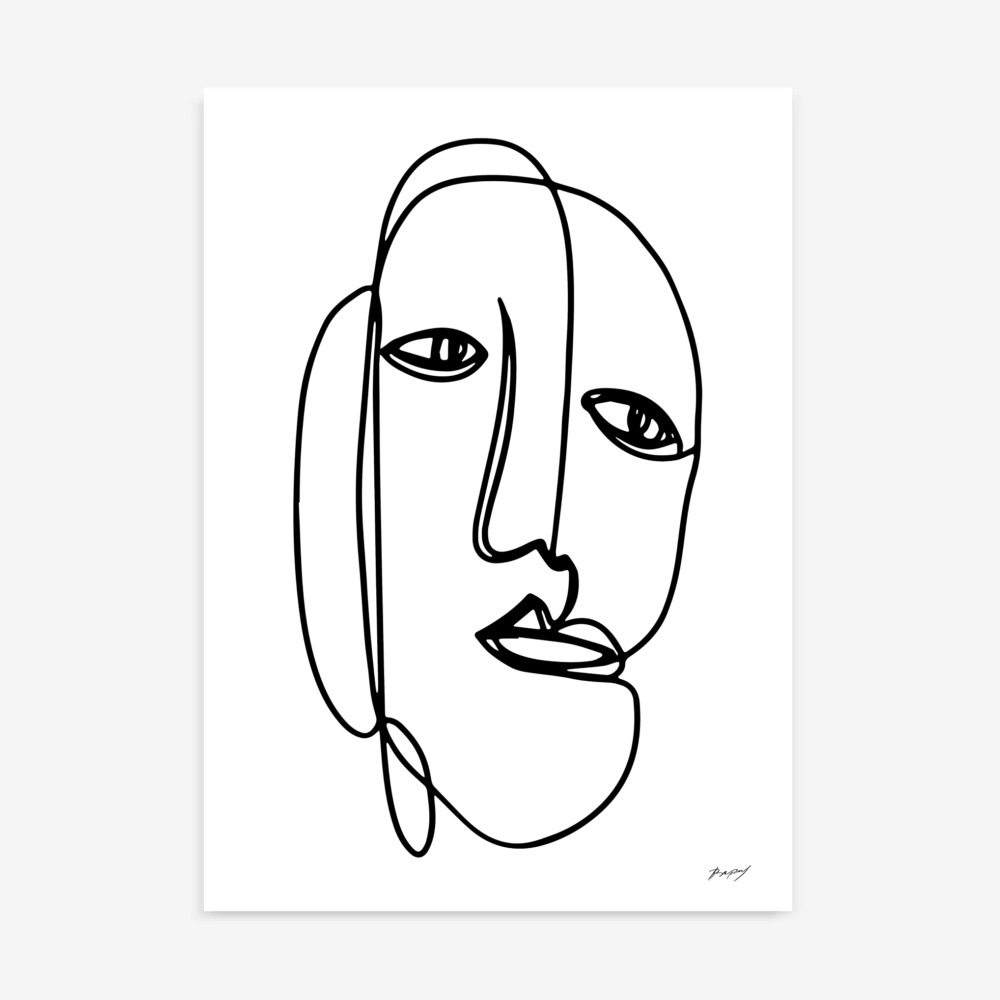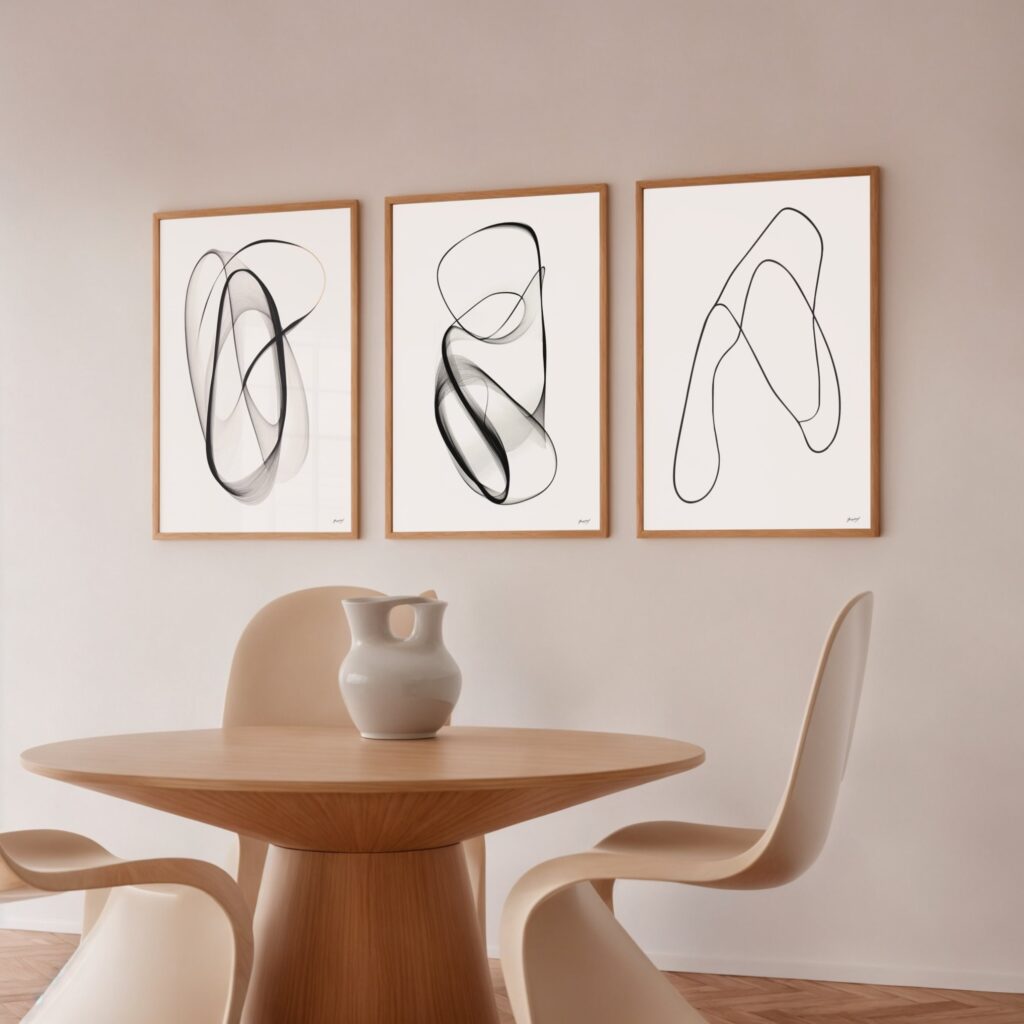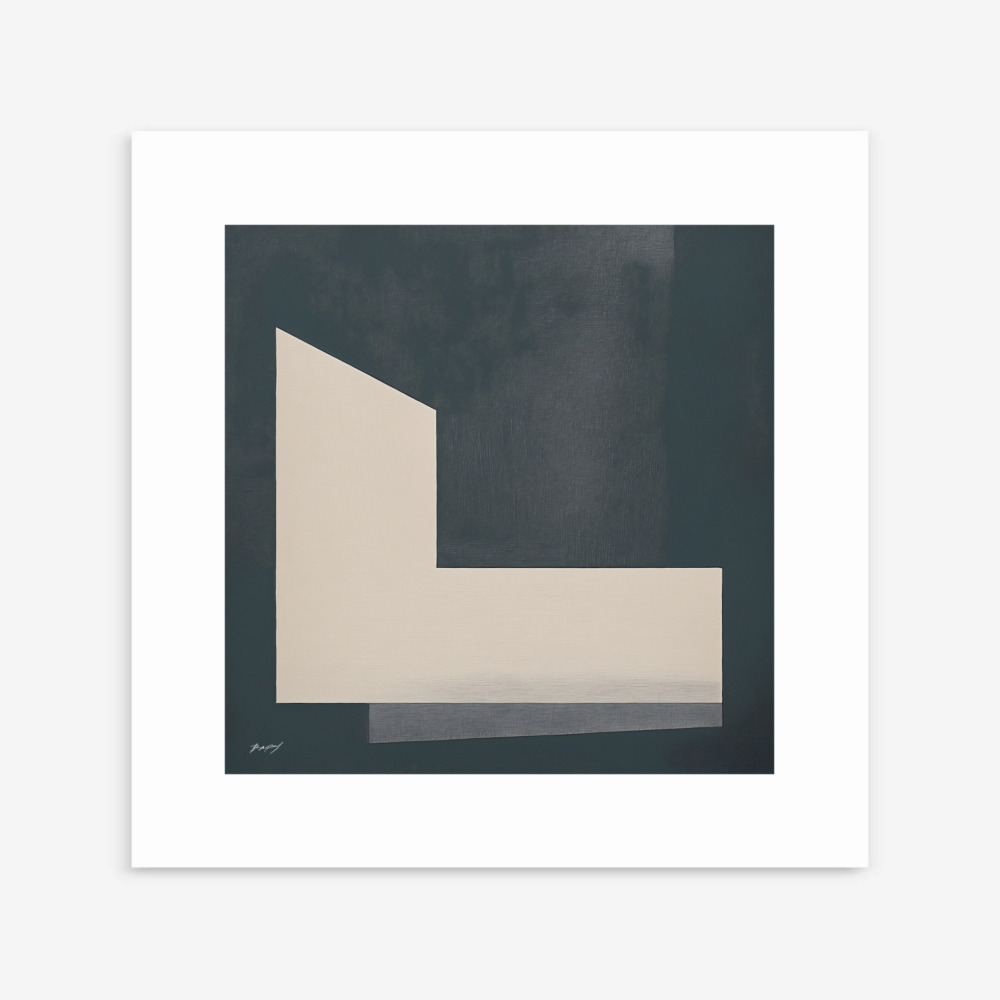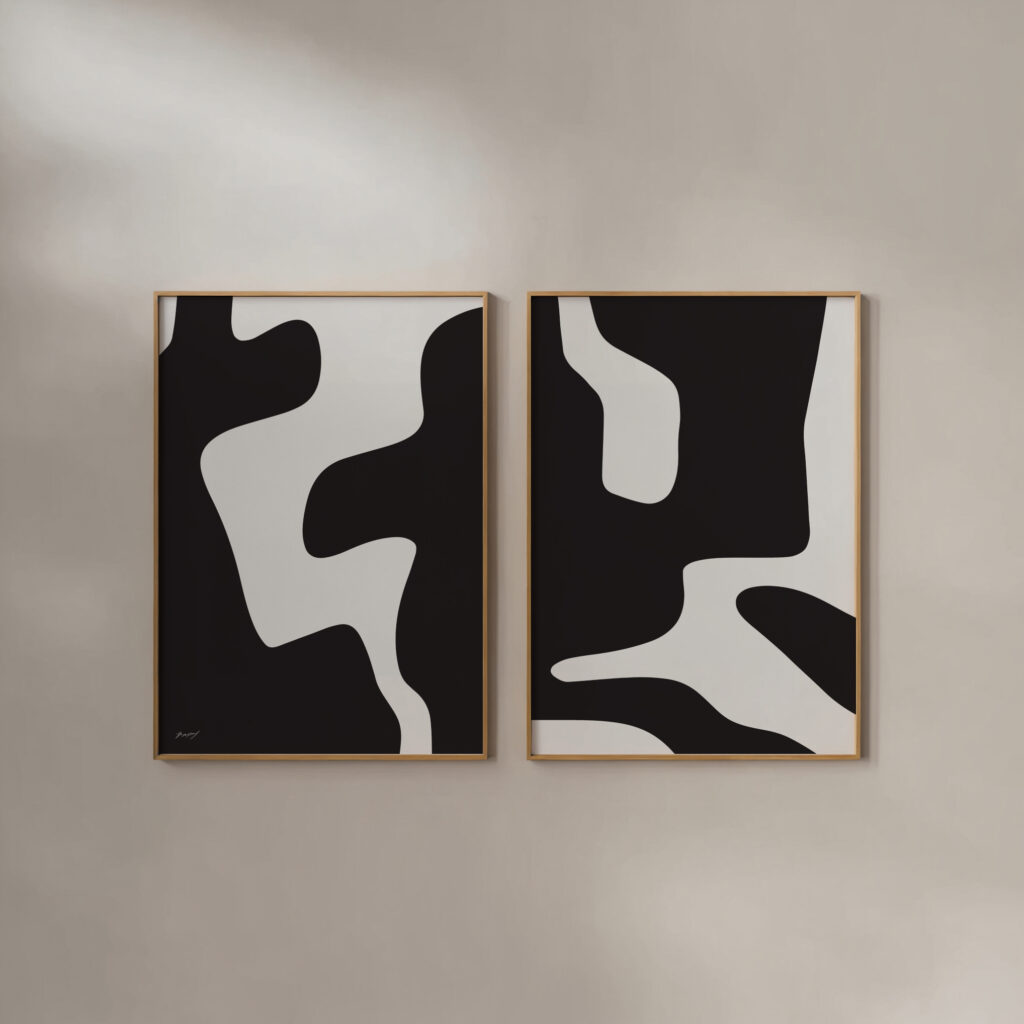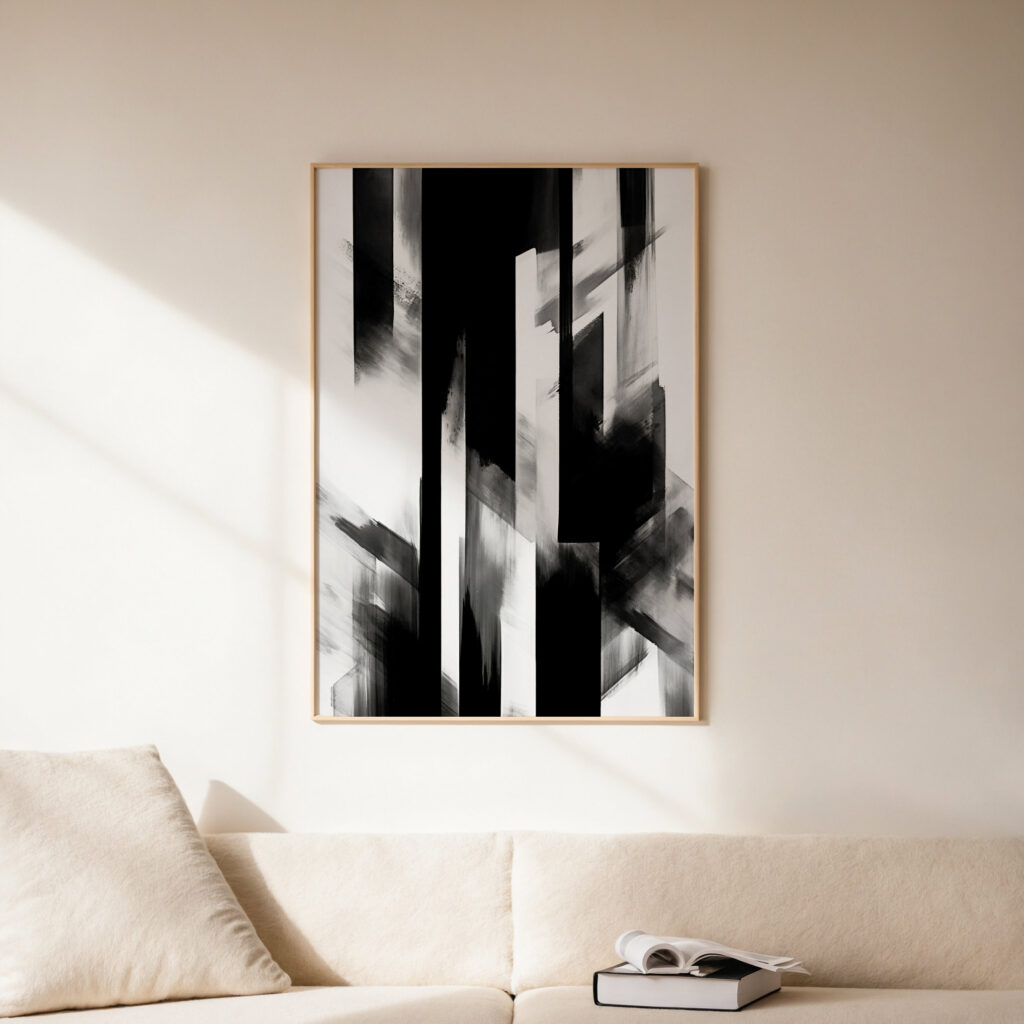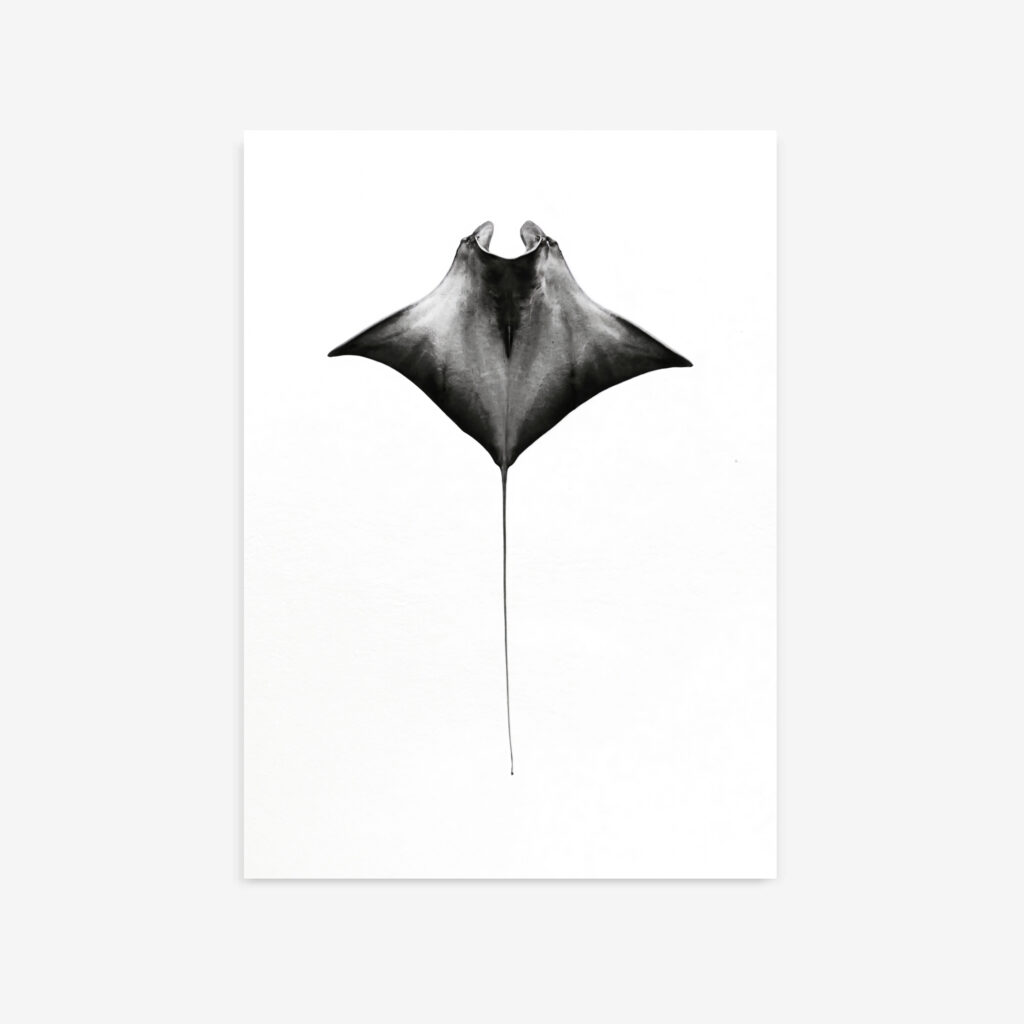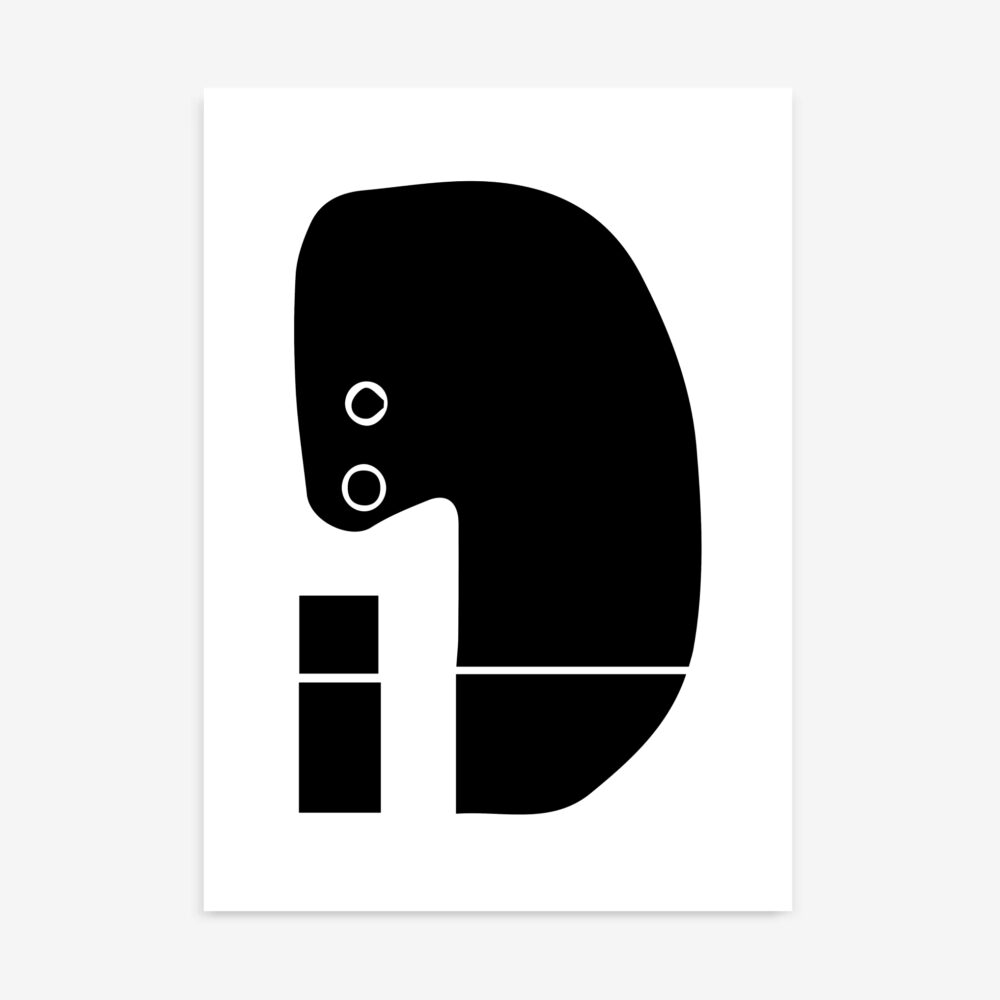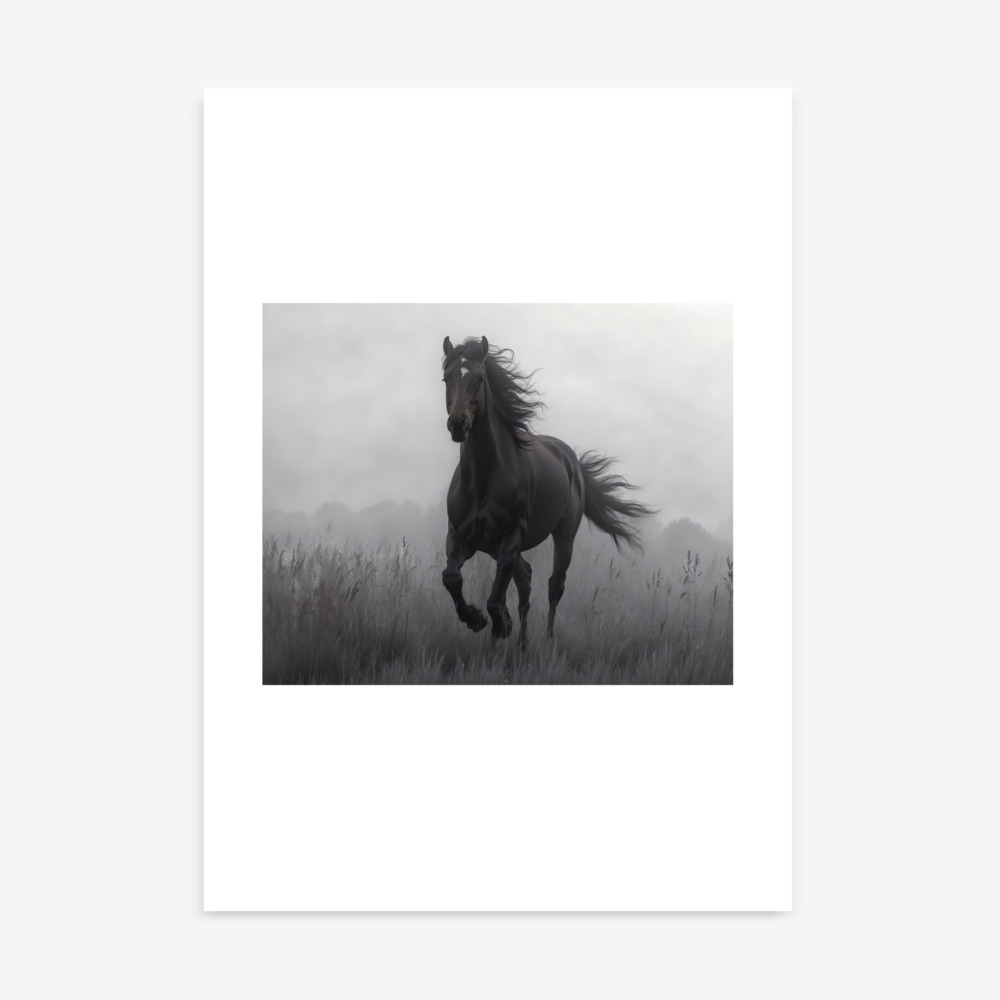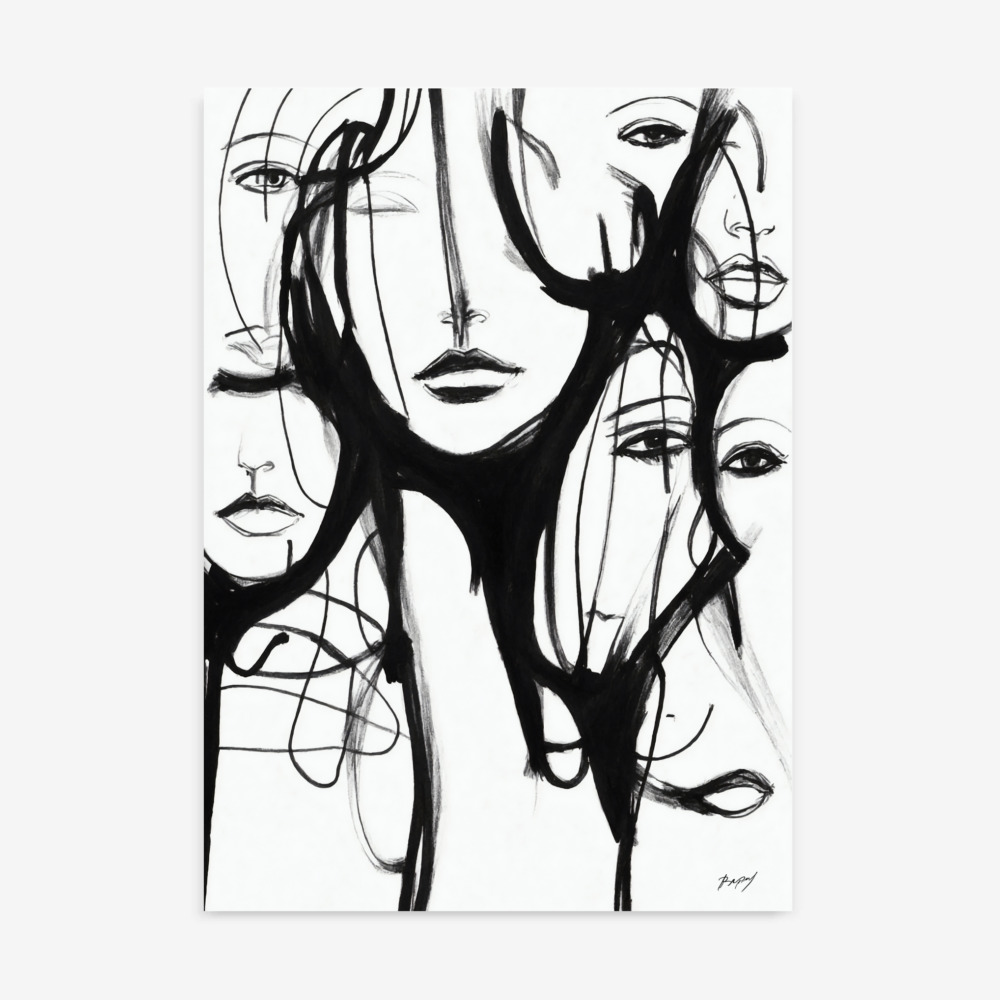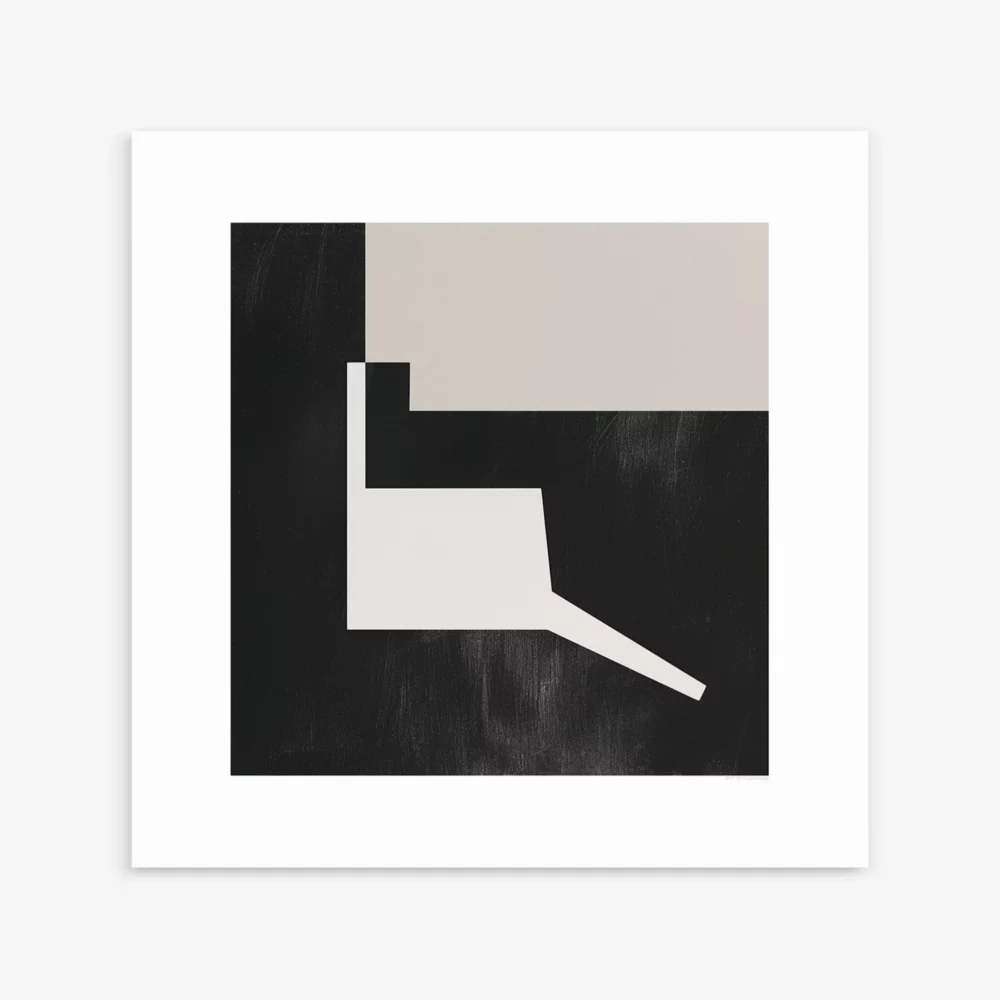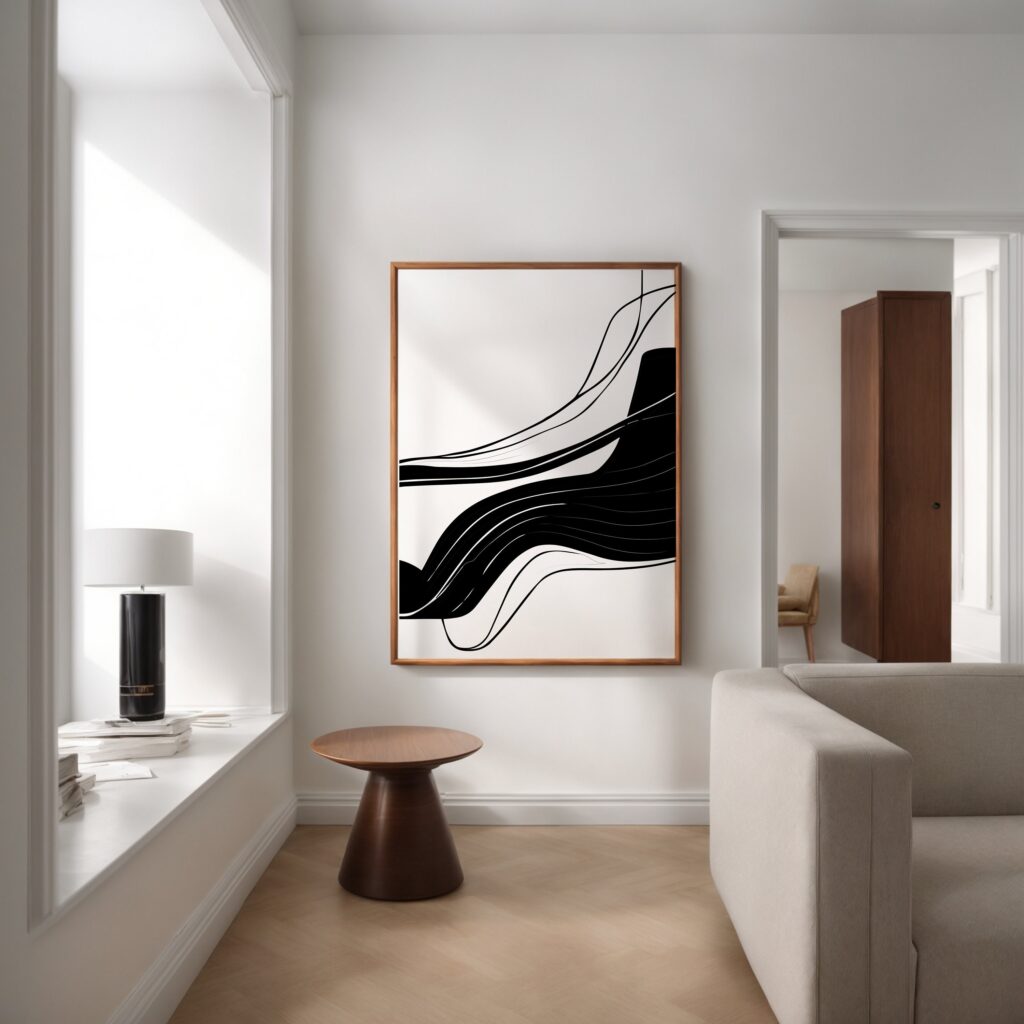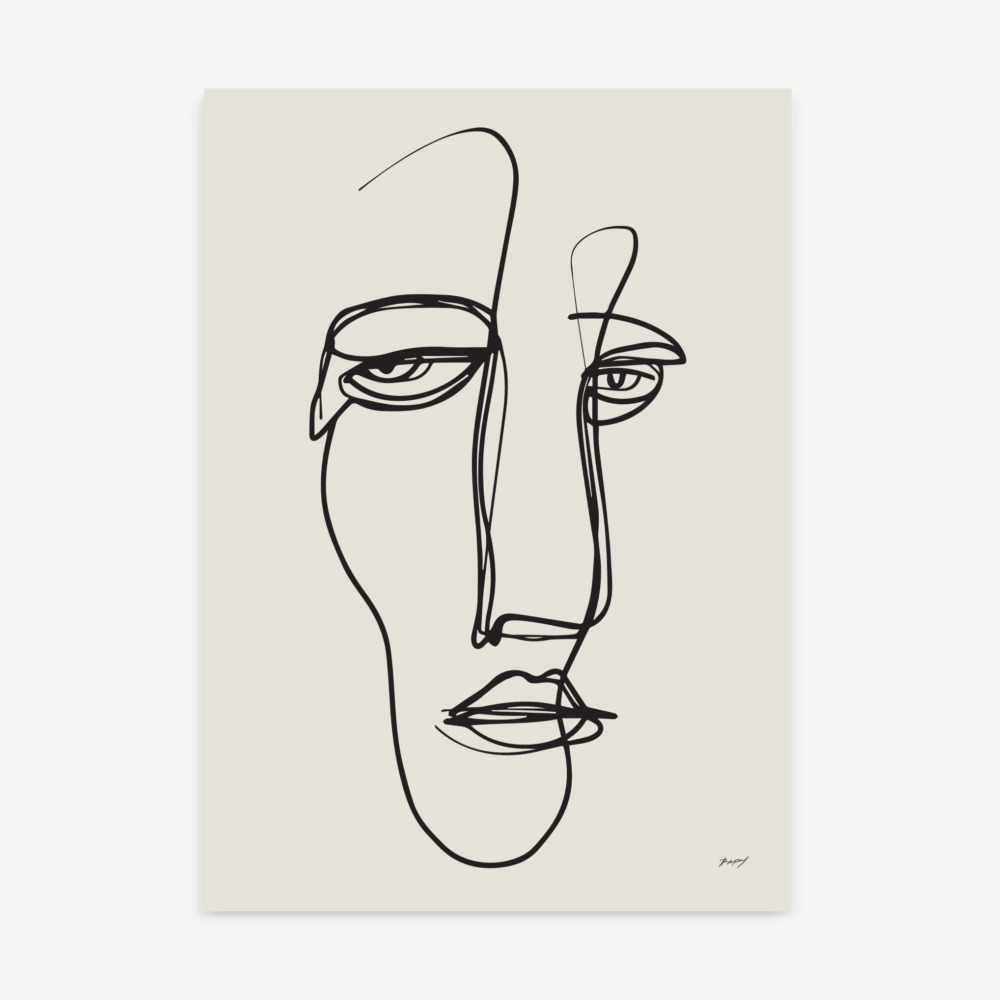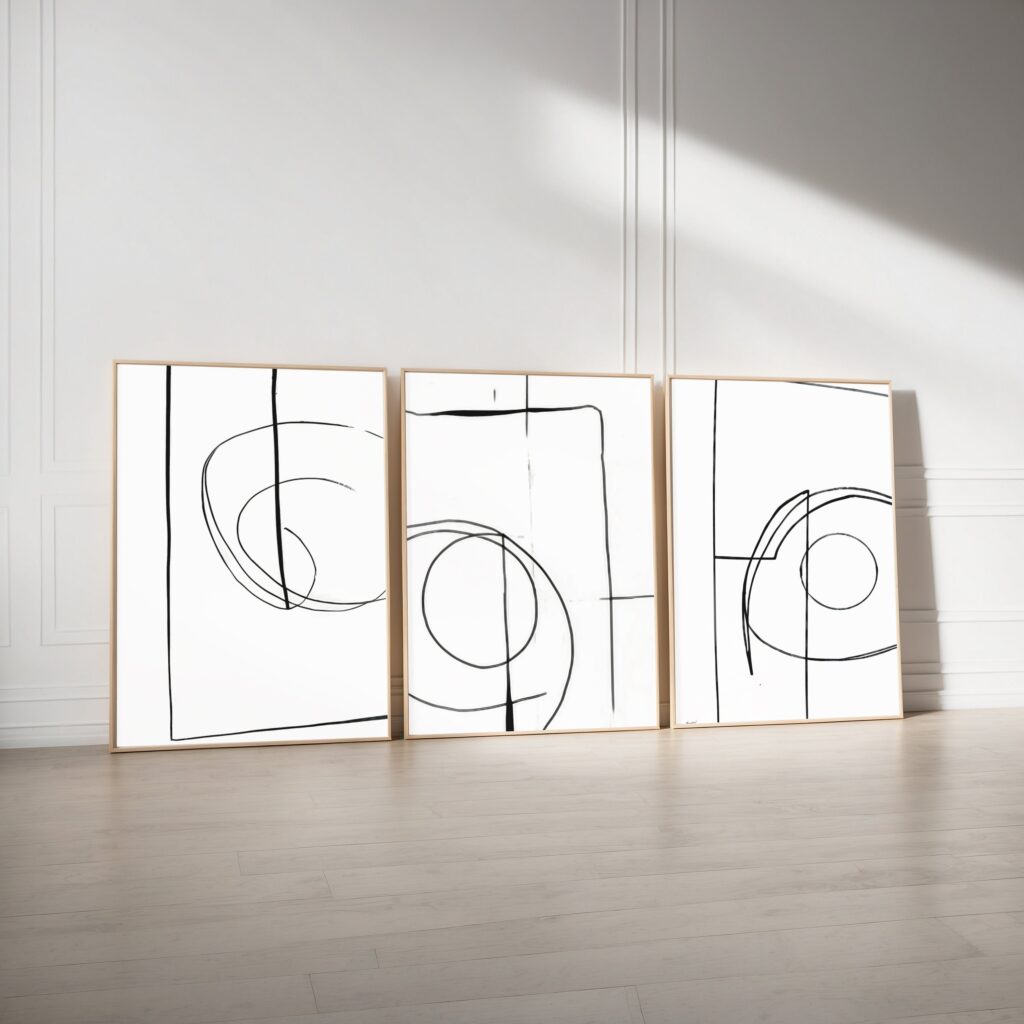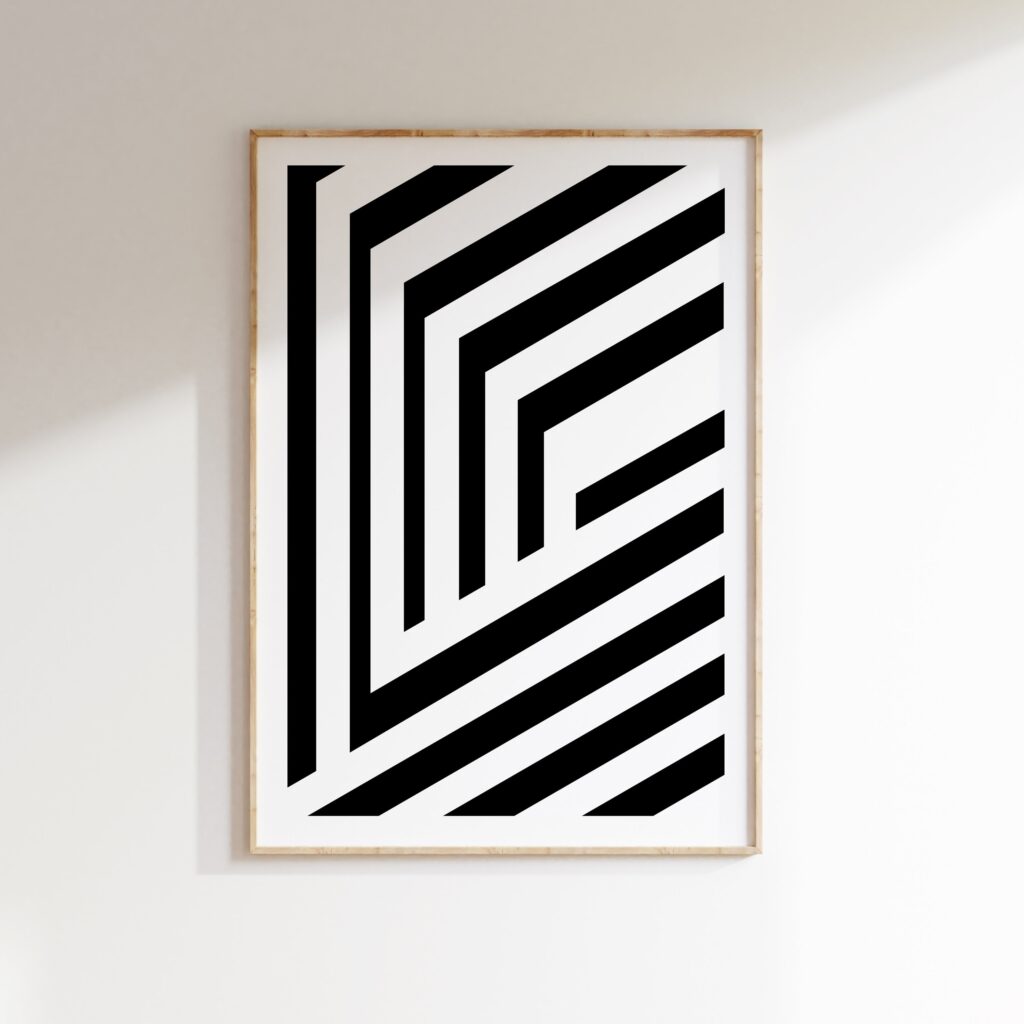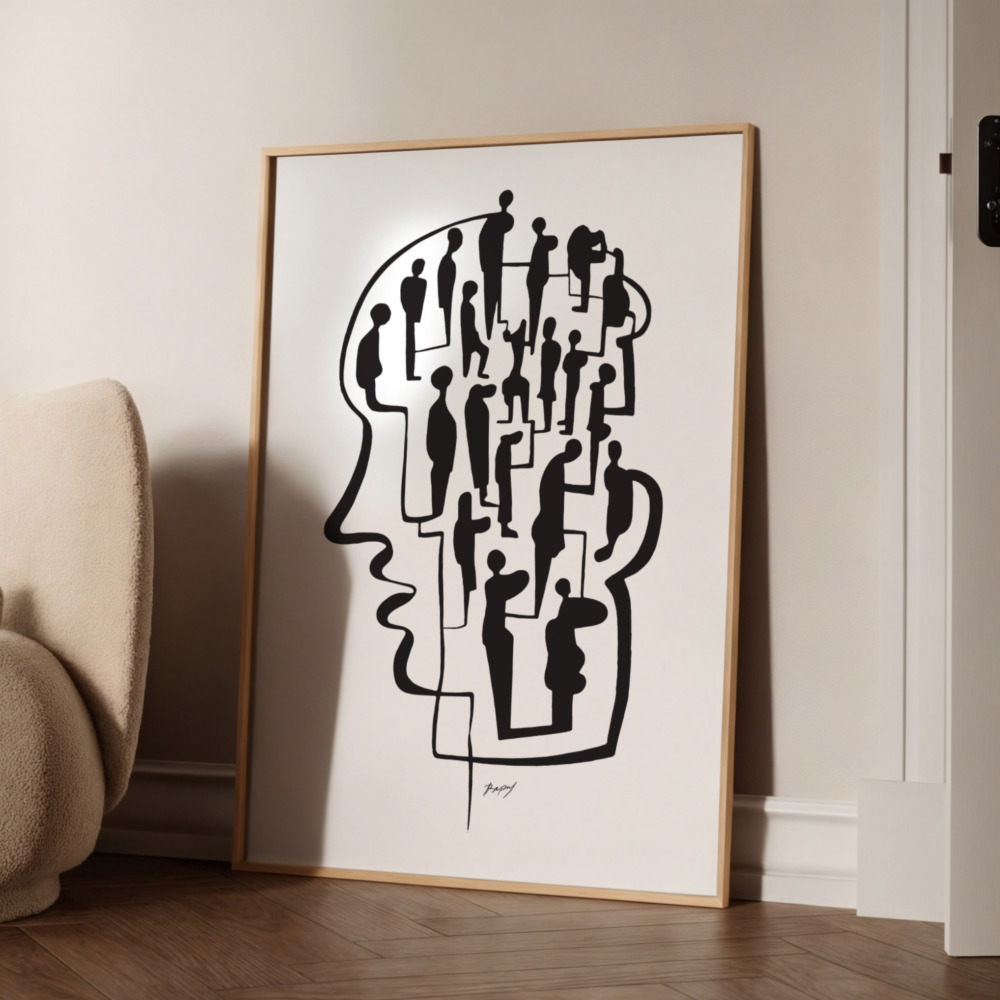When we think of black and white art, our minds often conjure a single, classic image. Perhaps it’s a timeless Ansel Adams landscape, a dramatic portrait from a bygone era, or the stark, elegant lines of a modern logo. But to confine this incredible medium to a single idea is like saying all music sounds the same.
In reality, the world of monochrome is a vast, rich, and breathtakingly diverse universe of style and expression. Stripping away color doesn’t limit the artist; it unleashes them. It forces them to communicate through the fundamental building blocks of visual language: line, shape, texture, light, and shadow.
This exploration is your personal guided tour through that universe. We’ll journey from the quiet, poetic whisper of minimalist line art to the raw, emotional shout of a large-scale abstract canvas. By understanding the unique personality of each style, you’ll not only deepen your appreciation for the art form but also gain the confidence to choose the perfect pieces that speak directly to you and your home’s unique character. Whether you’re a seasoned collector or just starting to buy art prints online, this is your guide to navigating the beautiful spectrum of black and white.
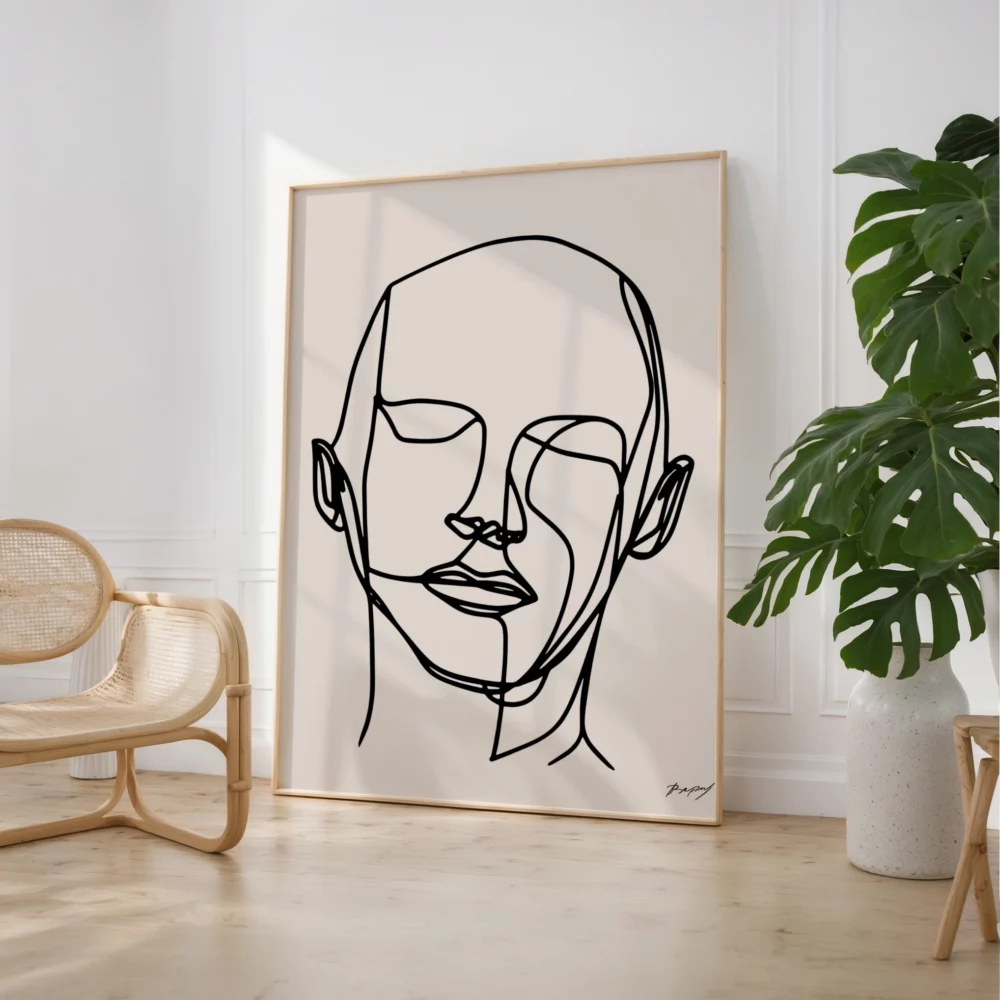
1. The Power of the Single Stroke: The Purity of Line Art
Let’s begin with the purest form of expression: the line.
Line art is visual poetry, saying the most with the least. It’s the art of reduction, where an entire mood, subject, or story is conveyed through the simple, elegant path of a single stroke or a few deliberate marks. Think of Picasso’s famous single-line animal drawings or the fluid, faceless figures that grace modern design blogs. This is art that breathes.
What Defines It?
-
Minimalism: Line art is the poster child for minimalist design. It embraces negative space, allowing the un-drawn parts of the canvas to be just as important as the lines themselves.
-
Elegance and Fluidity: There is a grace and confidence to a well-executed line drawing. It can feel spontaneous and effortless, yet perfectly balanced.
-
Focus on Form: Without color or shading to distract the eye, line art is a pure celebration of shape and contour. It captures the essence of a subject—the curve of a shoulder, the profile of a face, the shape of a leaf—with stunning simplicity.
The Psychological Impact:
Line art is inherently calming. Its uncluttered nature provides a visual resting place for the eye, making it a perfect antidote to our often chaotic and overstimulated world. It feels sophisticated, modern, and intentional, suggesting a quiet confidence.
How to Style It in Your Home:
Line art is a decorator’s dream because of its versatility.
-
In a Minimalist or Scandinavian Space: A single, large-scale framed line drawing is the perfect focal point. It adds a touch of organic humanity to a clean, structured room without adding visual noise.
-
In a Bohemian or Eclectic Room: Used within a larger gallery wall, line art provides a moment of graphic simplicity that helps to ground a collection of more colorful or complex pieces.
-
In a Home Office or Study: Its clean, intellectual feel promotes focus and creativity.
When looking for affordable art prints, line art is a fantastic place to start. It’s an accessible style that delivers a huge dose of sophistication for a minimal investment.
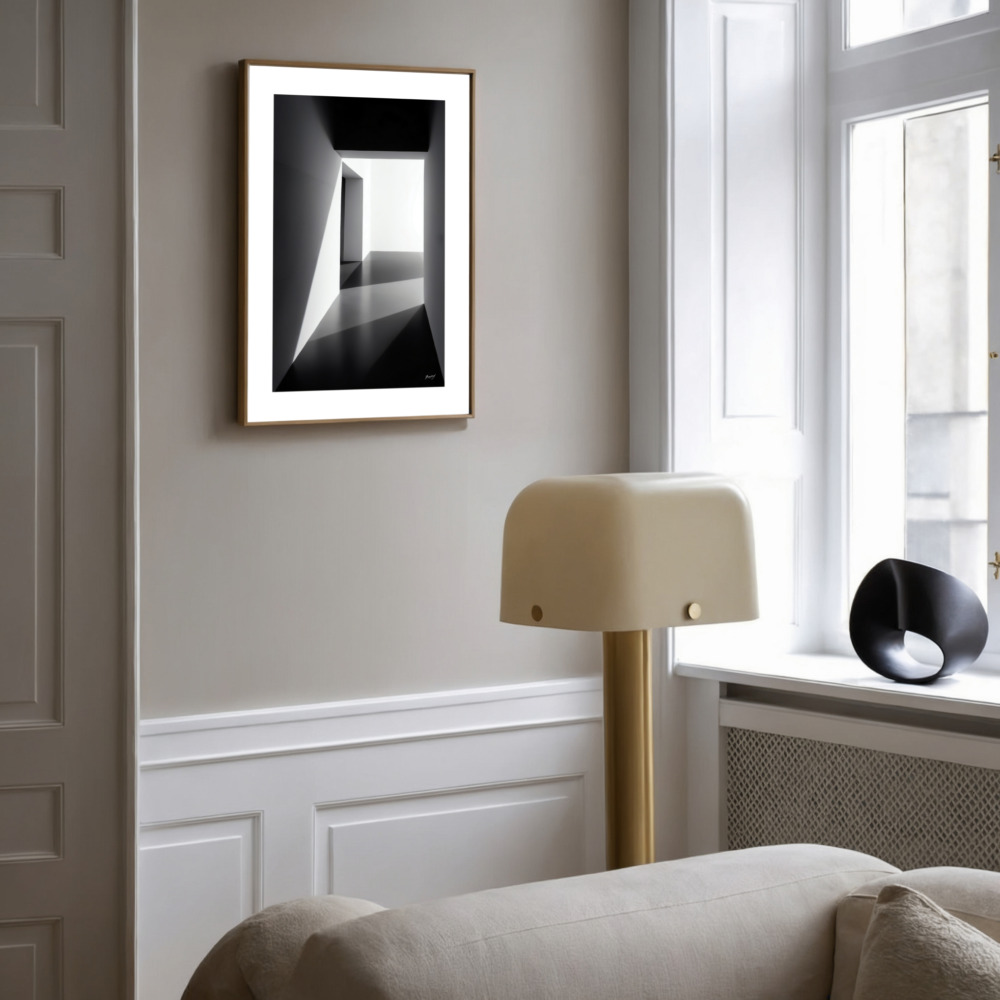
2. Capturing a Moment in Time: The Soul of Black and White Photography
If line art is poetry, then black and white photography is the great novel. It’s a rich, narrative-driven style that has captivated us for over a century. By removing color, the photographer forces us to engage more deeply with the story within the frame. Light, shadow, texture, and emotion become the main characters.
This is arguably the most popular and diverse category of black and white art, containing entire worlds within it.
Sub-Genre: The Majestic Landscape
When you remove the green from the trees and the blue from the sky, a landscape is transformed. It becomes a study in texture and form. The rough bark of a tree, the soft diffusion of fog, the jagged edge of a mountain against the sky—these elements become intensely powerful.
-
Styling It: Dramatic, high-contrast landscapes are perfect for creating a powerful focal point in a living room or entryway. Softer, mistier scenes can bring a sense of tranquility and peace to a bedroom or bathroom.
Sub-Genre: The Intimate Portrait
Color in a portrait can sometimes be a distraction, telling us about the subject’s clothing or surroundings. A black and white portrait, however, feels like it’s looking directly into their soul. Every line on a face tells a story. The focus shifts entirely to expression, gaze, and the raw emotion of the subject.
-
Styling It: A single, large-scale portrait can be incredibly moving and personal. A collection of smaller family portraits in black and white creates a timeless, cohesive gallery that feels more like fine art than simple snapshots.
Sub-Genre: The Gritty Street & Architectural Scene
This is where monochrome truly shines, capturing the energy, geometry, and raw humanity of urban life. The high contrast of light and shadow on city streets, the strong leading lines of buildings, and the candid moments of daily life all take on a graphic, timeless quality. It feels both nostalgic and utterly modern.
-
Styling It: Perfect for industrial lofts, modern apartments, or anyone looking to add an edgy, graphic punch to their decor. Architectural photography, with its focus on line and shape, works beautifully in minimalist and contemporary spaces.
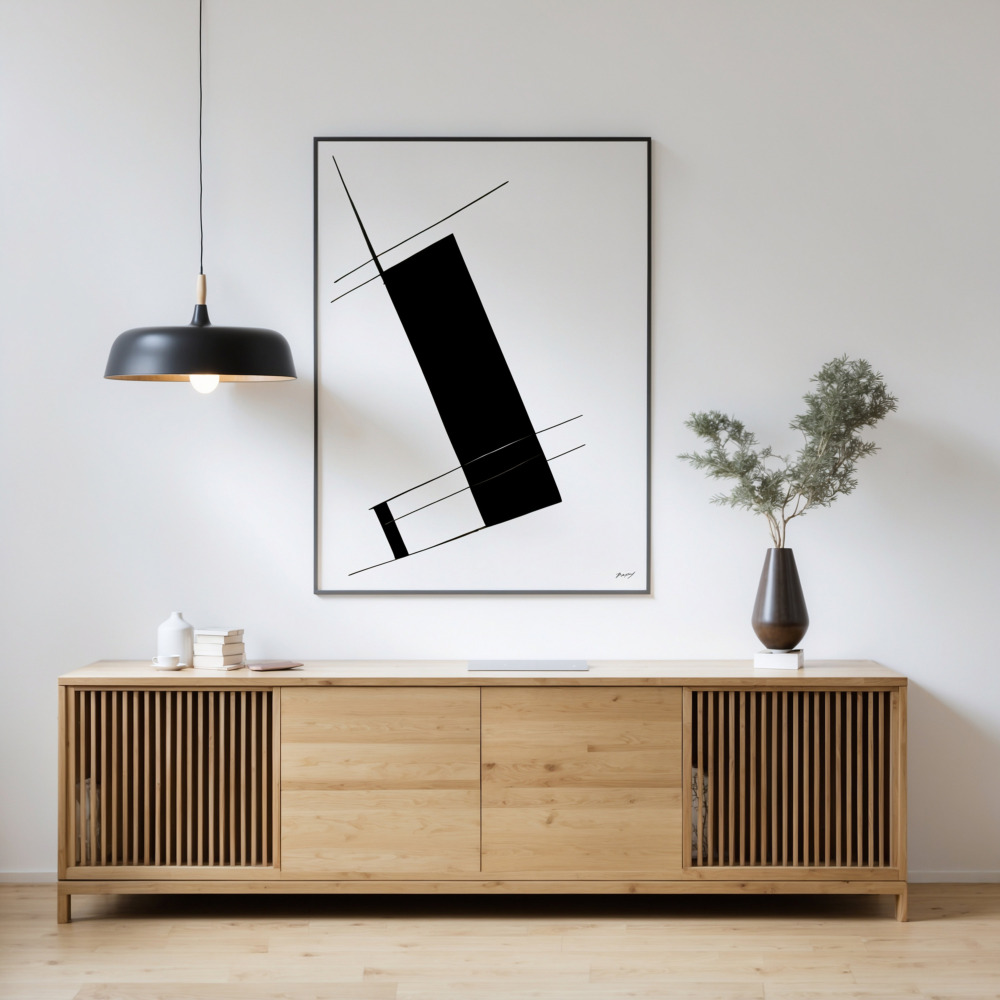
3. Making a Statement: The Graphic Punch of Typography & Geometric Prints
Sitting somewhere between the representational world of photography and the pure feeling of abstract art is the bold, direct world of graphic prints. This style uses letters, words, and simple shapes as its primary subject matter.
What Defines It?
-
Direct Communication: Typographic art allows you to literally spell out your personality. A favorite quote, a meaningful word, a child’s initial—it’s a direct and unambiguous form of self-expression.
-
Modern and Structured: Geometric art, with its clean lines, repeating patterns, and perfect shapes, brings a sense of order, rhythm, and modernity to a space. It feels clean, intentional, and intellectually stimulating.
-
High-Contrast Impact: These prints often rely on the starkest contrast between pure black and pure white for maximum visual punch. They are designed to grab your attention.
The Psychological Impact:
Graphic prints feel active and declarative. A typographic print can be inspirational, humorous, or sentimental, while a geometric print can feel grounding, energetic, or even meditative, depending on the pattern. They make a space feel curated and thoughtfully designed.
How to Style It in Your Home:
-
As a Gallery Wall Anchor: A bold typographic print can be the central piece that sets the theme for an entire gallery wall.
-
In a Home Office: A motivational quote or a strong geometric pattern can help foster focus and productivity.
-
In Modern or Mid-Century Modern Decor: The clean lines and graphic nature of these prints are a perfect match for the furniture and architecture of these styles.
This is another area where you can find fantastic affordable art prints to inject a lot of personality without a big budget.
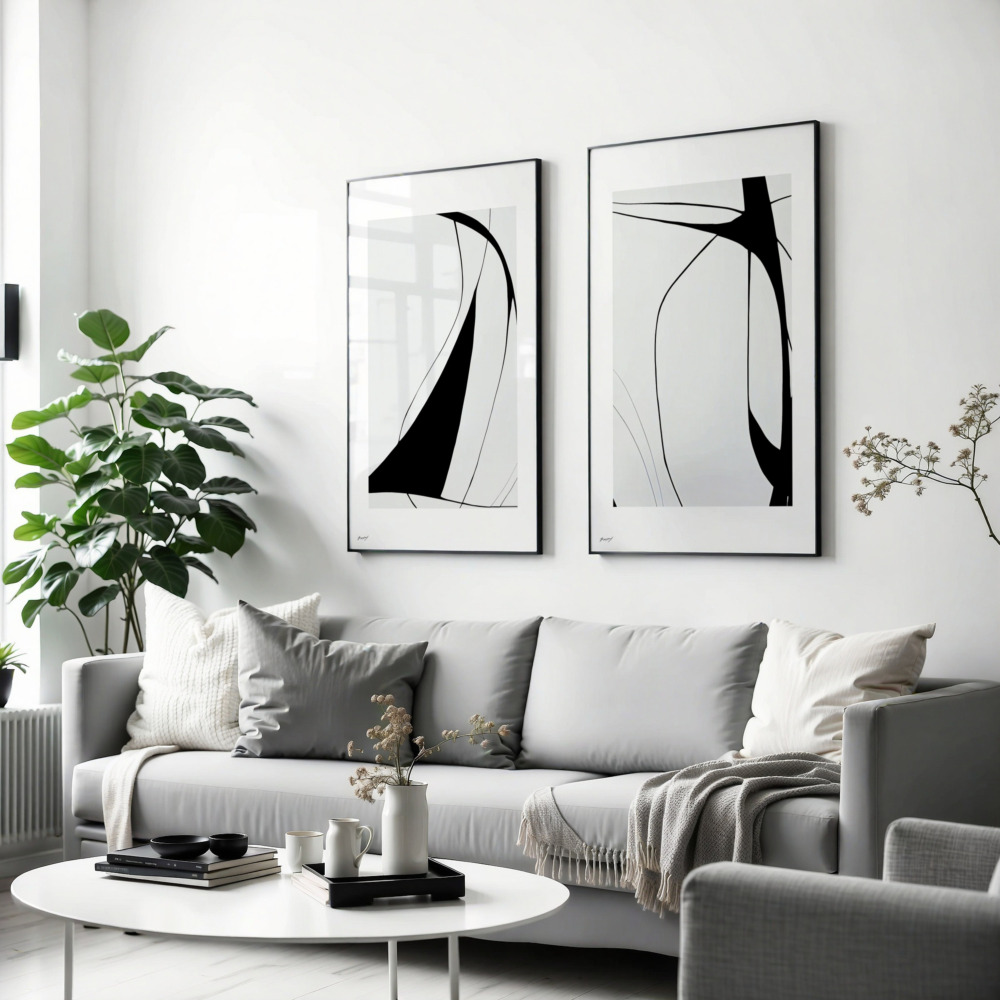
4. The World of Pure Feeling: The Expressive Depths of Abstract Art
We now arrive at the other end of our spectrum: the world of abstract art. If line art is a whisper and photography is a story, abstract art is pure music. It’s non-representational, meaning it’s not of anything in the real world. Instead, it’s a direct translation of emotion, energy, and sensation onto the canvas.
To the uninitiated, abstract art can sometimes feel intimidating, but its goal is simple: to make you feel something.
Sub-Style: Abstract Expressionism
This is the art of movement and energy. Think of bold, gestural brushstrokes, splatters, and drips that capture a sense of spontaneity and raw power. In black and white, this style is incredibly dramatic, focusing on the dynamic tension between the aggressive black marks and the quiet white canvas.
-
Styling It: A large-scale abstract expressionist piece is the ultimate statement-maker. It needs room to breathe and is best used as the main focal point in a living room, dining room, or large entryway. It’s a jolt of energy.
Sub-Style: Geometric Abstraction
Unlike the wildness of expressionism, this style is about order, balance, and harmony. It uses simple shapes—circles, squares, triangles—in thoughtful compositions. It’s the intellectual side of abstract art, exploring relationships between forms.
Sub-Style: Minimalist Abstract
This style takes the “less is more” philosophy to its emotional conclusion. It might be just one or two simple shapes, a soft, textured field of grey, or a few carefully placed marks. It’s quiet, contemplative, and profoundly serene.
-
Styling It: Perfect for creating a zen-like, meditative atmosphere in a bedroom, reading nook, or any space dedicated to relaxation and mindfulness.
How to Choose, Curate, and Confidently Buy Your Art
Understanding the styles is the first step. Now comes the personal part: choosing the right pieces for you and your home. This process should be joyful, not stressful.
1. Go With Your Gut (Seriously)
This is the most important rule. Art is deeply personal. A piece that one person finds chaotic, another might find exhilarating. A piece that one finds boring, another might find serene. When you browse to buy art prints online, pay attention to your initial, visceral reaction. Which pieces make you stop scrolling? Which ones make you lean in closer? Which ones spark a feeling—any feeling? That’s your intuition telling you what you connect with.
2. Think About the Room’s Mood
Consider the function and desired feeling of the space you’re decorating.
-
For the Bedroom: You likely want a calming atmosphere. Look towards minimalist line art, soft black and white landscape photography, or quiet minimalist abstract pieces.
-
For the Living Room: This is a social space, so you can be a bit bolder. A dramatic abstract expressionist piece, a thought-provoking street photograph, or a dynamic gallery wall can all work beautifully.
-
For the Home Office: You might want something that inspires focus and creativity. Consider geometric prints, architectural photography, or clean typographic art.
3. Master the Art of the Mix
The most stylish and personal homes often mix different styles of art. The key to making it work is finding a common thread. In a black and white wall art collection, that thread is already built-in: the monochrome palette!
-
Create a Dynamic Gallery Wall: Try combining a classic portrait, a modern line drawing, a bold typographic print, and a small abstract piece. Frame them similarly (e.g., all simple black frames) to create a cohesive yet fascinating collection that tells a rich story about your taste.
4. Be a Savvy Online Shopper
The internet has made it easier than ever to find incredible and affordable art prints.
-
Look for Quality: Pay attention to descriptions. Look for prints made on heavy, archival, acid-free matte paper. This gives the print a velvety, high-end finish and ensures it won’t yellow over time.
-
Consider the Print Method: Giclée printing is the gold standard for art prints, using pigment-based inks for superior tonal depth and longevity.
-
Framing is Key: A cheap-looking frame can bring down the most beautiful print. Invest in a solid, well-constructed frame, or buy your print unframed and take it to a local framer for a custom look that perfectly suits your decor.
Your Home, Your Masterpiece
The journey from the simple elegance of line art to the emotional depth of abstract art shows us one thing clearly: black and white art is not a limitation. It is a world of infinite possibility.
It’s a medium that can be quiet or loud, classic or contemporary, simple or complex. It can tell a story, or it can invite you to find your own. By exploring these different styles, you empower yourself to move beyond simply decorating a wall and begin curating a home that is a true extension of who you are.
So, trust your eye, embrace the power of the monochrome palette, and start building a collection that you will love for years to come.

